






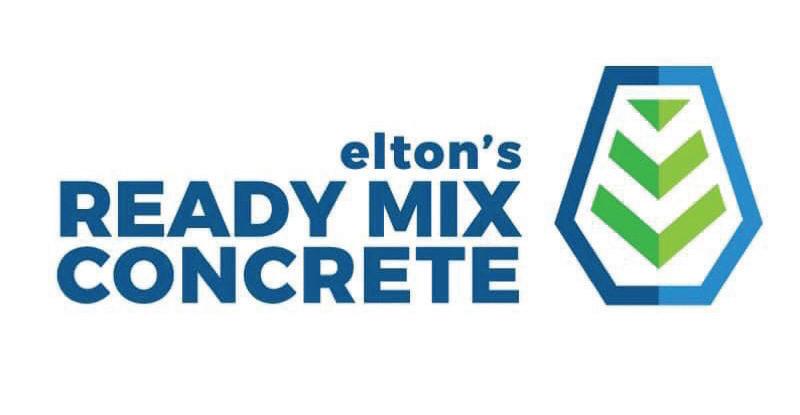
ELTON'S READY MIX CONCRETE 04 BIG 5 CONSTRUCT SOUTHERN AFRICA 22 INTEGRATED IT AND PROPERTY DEVELOPMENT 44 JUNE 2023 | No 1171
AVOID CONCRETE STRENGTH DELAYS.
As winter approaches, the colder ambient temperatures can cause delays in concrete strength development as well as finishing aspects. Rest assured, this challenge can be easily overcome using CHRYSO’s Premia Range of admixtures and demoulding agents.
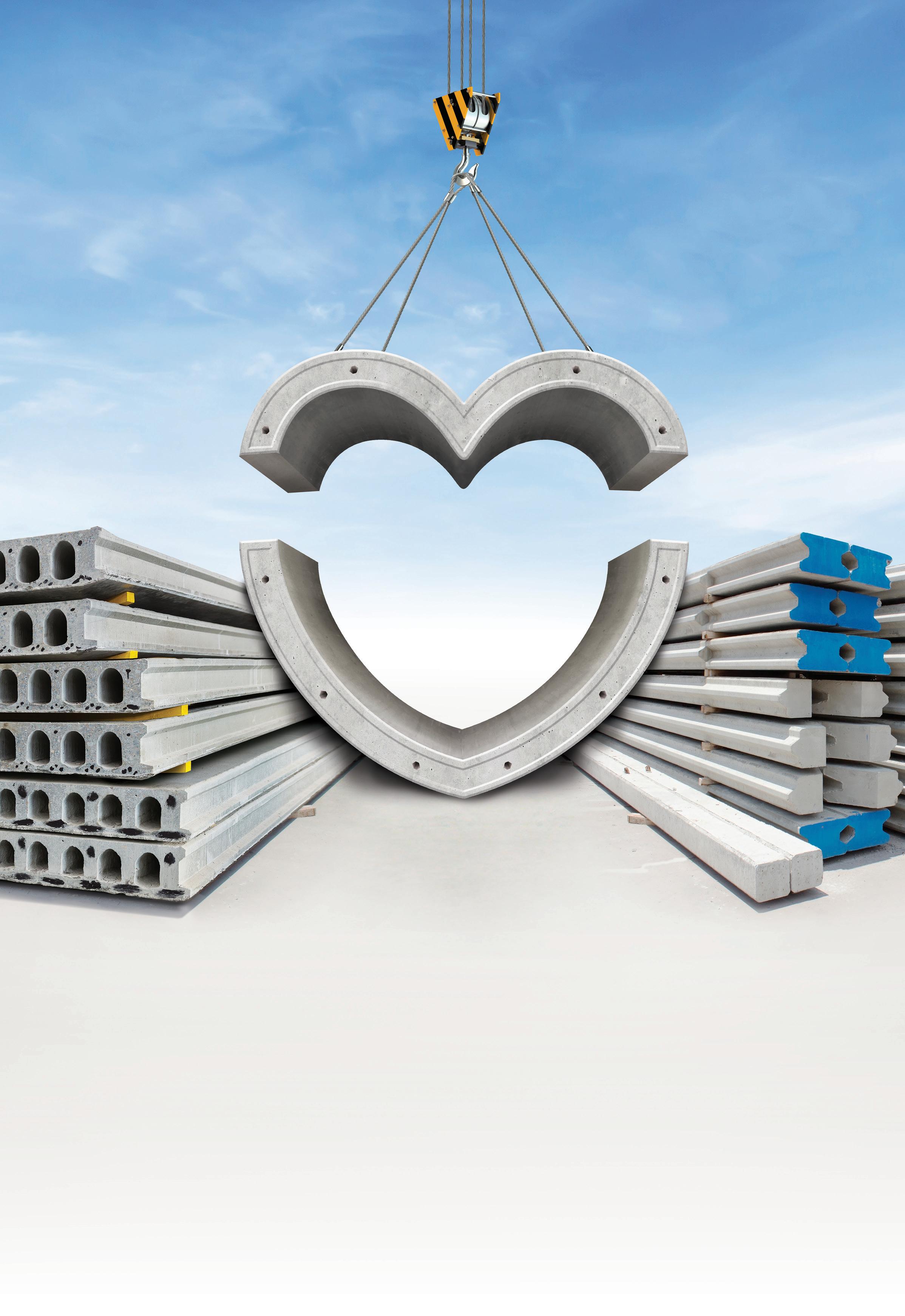
Chryso Southern Africa | +27(0)11 395 9700 | www.za.chryso.com | www.gcpat.com
CHRYSO WinteR ACCeleRAtORS
South African Builder is the official journal of Master Builders South Africa, established in 1923. The opinions expressed by contributors are not necessarily those of Master Builders South Africa. SA Builder is a registered trademark of Master Builders South Africa. Any use of this trademark without the express and written approval of Master Builders South Africa is prohibited. No material contained herein may be reproduced in whole or in part without the prior written permission of the publisher. SA Builder © 2023. All rights reserved.

CONTENTS AND CREDITS
PROJECT MANAGEMENT
24 Accelerating infrastructure development to promote intra-continental trade
BUILDING BUSINESS
26 AI and your business: here to help – now

FEATURES
29 Selecting a dewatering pump
32 Brave new working world
34 Quality systems underpin Concor’s build-to-last approach
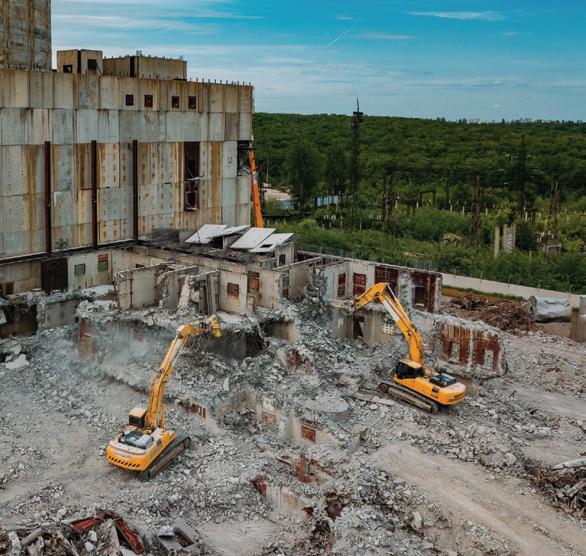
INNOVATION
37 Concrete and carbon: reduction case studies in the USA

PRODUCTS
40 Oil-free transformers change options across essential sectors

42 Broadening financial options for contractors
GLOBAL VIEW
44 Africa’s property sector drives innovation for digital solution
CAPTAINS OF CONSTRUCTION
47 Meet Elton Bvumbi
PUBLISHER
Isikhova Media (Pty) Ltd

10th Floor, Metal Box, 25 Owl Street, Milpark, Johannesburg, South Africa
Tel: +27 11 883 4627
www.sabuilder.co.za /www.isikhova.co.za
CONTRIBUTIONS
Master Builders South Africa
Tel: +27 11 205 9000
E-mail: editor@sabuilder.co.za
www.masterbuilders.org.za
Free download available on: www.sabuilder.co.za
Twitter: @Builders_SA | Facebook: @SouthAfricanBuilder
Editor: Nicholas McDiarmid
E-mail: nicholas@isikhova.co.za
Director: brand strategy: Jenny Justus
Tel: 083 450 6052
E-mail: jenny@isikhova.co.za
Managing director: Imraan Mahomed
E-mail: imraan@isikhova.co.za
Creative director: Joanne Brook
E-mail: joanne@isikhova.co.za
Operations director: Thuli Majola
E-mail: thuli@isikhova.co.za
Copy editor: Anne Phillips
Advertising sales: Tel: +27 11 883 4627 Mobile: 072 383 3203/083 450 6052
savvy thinkers smart doers together people Proud Media Partner
02 Message from the editor 02 From the president’s desk COVER STORY 04 Pioneering success in the new economy MBA NEWS 06 Construction industry R&D tax incentives 08 Scaffolding safety in construction INDUSTRY NEWS 11 Danfoss celebrates 30 years in SA 12 Project management: the art of shaping success 14 Fostering an ethical culture for SA’s built environment 16 Local cement and concrete major approved for second listing 17 Near-perfect health and safety milestone achieved 18 Public-private partnerships best suited to alleviate SA’s mounting water issues ASSOCIATION NEWS 20 SAWEA advocates grid optimisation in the absence of urgent transmission build EVENT NEWS 22 Big 5 Construct Southern Africa: driving economic growth, recovery and transformation in the construction industry
JUNE 2023 SOUTH AFRICAN BUILDER 01
CONTENTS
12 27 21 35
THE COMPLEX CONSTRUCTION SECTOR
South Africa’s construction sector – like all its developed counterparts – is not a single monolith. Rather, it is a complex cluster of industries, including banking, materials and equipment manufacturers, contracting organisations and many other entities across public and private sectors. However, a major distinction must be made between entities operating exclusively in the construction industry – construction contractors being a central example – and those who have a role to play in the industry, such as banks. Defining a sector and defining an industry is critical when intersecting prospects are in a period of major flux.
In this issue, much of the content touches the sides of our industry, from the technologies to the political
and economic boundaries affected by it. SA is still the economic heart of the continent and has much to offer and much to gain by taking up leading roles in co-ordinating the technological and material development of the construction industry beyond our borders.
From our cover story to our closing global view, this issue looks forward and outwards in many different ways. From the attitudes and dedication of an entrepreneur negotiating a successful passage through the pandemic lockdown to unlocking crossborder value in the property sector, the vitality of our industry is palpable again.
There is much to look forward to.
Nicholas McDiarmid, Editor: SA Builder

FROM THE PRESIDENT’S DESK
Despite near-term challenges in certain construction sectors, medium- to long-term growth in South Africa remains intact.
The construction industry is expected to grow steadily over the next four quarters. The growth momentum is expected to continue over the forecast period, recording CAGR of 5,8% from 2023-2027. The construction output in the country is expected to reach R280 million by 2027.
Against this backdrop, the MBSA still believes that the industry suffers from unfair tendering practices. The local construction industry is still dissatisfied with the explanation given by parastatal Sanral for awarding over R6,6 billion worth of contracts to Chinese-owned joint ventures. The only tender to be awarded to a local company is the R55 Matatiele rehabilitation project, valued at R1,2 billion, which will be undertaken by Down Touch Investments based in Welkom.
The MBSA would like to remind government that the Gautrain infrastructure was built by the Bombela Concession Company, a partnership between Bombardier, Bouygues, Murray & Roberts, the strategic Partners Group, the RATP Group, the J&J Group and Absa Bank. The project was delivered on time.
It must also be noted that the Fifa World Cup was hosted by SA in 2010. In preparation for the event, the country embarked on an accelerated infrastructure improvement programme which placed heavy demands on capacity of the local construction industry. The stadiums were delivered on time for the event, using local construction companies. The question is: does government think we cannot deliver the road infrastructure as a local construction industry?
Sanral’s response regarding Chinese investment in South Africa clarified that South African law does not impose any restrictions on foreign companies conducting business in our country.
Musa Shangase, president: MBSA

SOUTH AFRICAN BUILDER JUNE 2023 02 EDITOR'S NOTE















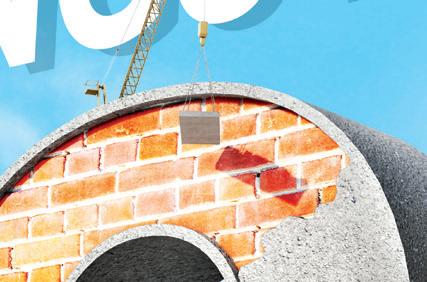























Corner North Rand & Trichardt Road, Bartlett AH, Boksburg BOKSBURG Corner Fourways Boulevard & Roos Street Fourways FOURWAYS Corner Blackrock Street & Stoneridge Drive, Greenstone Park Ext 2, Edenvale GREENSTONE Corner Hendrik Potgieter & Cascades Road, Little Falls, Roodepoort LITTLE FALLS shop online at www.leroymerlin.co.za leroymerlinsa1 leroymerlin.southafrica leroymerlinsa Valid until 2-27 June 2023. Terms and conditions apply. We’ve got all the building materials you need to complete your contracting jobs without hassle. Make your home the best place to live ITE Cement 32.5N Polypropylene Bags 50KG 81484318 R 79.95 Self Leveling Screed KBC KWIK 20KG 81441552 R 189 R 128 Cold Asphalt 25KG 81467202 Brickforce 2.8mmx150mmx20m NHBRC 81415456 Also available in 81415462 R 49.90 Plaster Multipurpose RHINOLITE 40kg 81423827 R 348 R 1.58 Cement Brick Stock 7MPA 81456855
Elton’s Ready Mix Concrete –the dream child of Elton Bvumbi – opened its doors for business in 2019. With Bvumbi at the helm – sourcing, consulting with and advising clients, preparing and executing bespoke concrete mixes, delivering, pouring and pumping concrete and managing this growing enterprise in between – it was up to him to navigate the challenges looming for the company at the dawn of 2020. And navigate he did, with a keen eye for the opportunities of the pandemic and its lockdowns.


Today, Elton’s Ready Mix boasts a full-service concrete offering, with the expertise, capital equipment and complex market arrangements that speak to Bvumbi’s 15 years as a mechanical engineer in the mining sector, as well as his natural ability and orientation for growth. A thriving and very necessary contributor to the construction industry, he is working towards a leading position in the Fourth Industrial Revolution, with a deepening technological integration underway and an eye on the concrete 3D printing housing market, for which he plans an offering by 2025.
SCALING UP THE RIGHT WAY
“The reality of finding viable revenue streams during lockdown was a creative force, delimiting the way I viewed the market,” he explains. “From meeting the sudden demand for concrete blocks to enable temporary healthcare facilities to supplying sanitisers, I learnt valuable lessons about succeeding in difficult markets.” The result was a strong position for Ready Mix, with the
ability to scale up responsively and responsibly to its current fullmarket offering.
“We recently opened a concrete brick-making operation in Gauteng, with 20 000 bricks in stock at any one time and a production capacity of 4 800 bricks an hour,” says Bvumbi, noting that growing his business overtime is in itself a discipline, drawing on recent experience as well as his 15 years’ mechanical engineering, managing project development and essentially being on the client side of the industry. It has resulted in market viability, coupled with a maturing organisation able to fit capacity to meet demand.
SOCIAL AND ENVIRONMENTAL POSITION
From operational to market
ELTON’S READY MIX CONCRETE –

PIONEERING SUCCESS IN THE NEW ECONOMY
SOUTH AFRICAN BUILDER JUNE 2023 04
COVER STORY
positions, the drive to be a responsible corporate citizen is integral to Bvumbi’s professional outlook. “Elton’s Ready Mix has developed into a full-service concrete supplier with social, environmental and economic development at its core,” he says. The need for more housing in SA puts steady brick supply at the forefront of a demand-driven enterprise and the company is driving enterprise development by offering much-needed opportunities to sub-contractors.
“Our ready-mix business is able to meet the more pressing demand for the delivery of increasing complex concrete mixes,” says Bvumbi. As engineer who are able to work closely with concrete design specialists, the company sources the perfect aggregates and admixtures, using the precise methods required for all concrete applications.
With two facilities in Gauteng and one in Mpumalanga, Elton’s Ready Mix has the mixing, transporting, pumping and full delivery infrastructure and expertise which only a full-house operation can deliver. “Our mix designs range from 10-60MPa. We do standard mix (75-100mm slump), pumpable mixes, swimming pool mixes, nofines concrete, reinforced concrete and screed mixes,” says Bvumbi.

“We only make use of superior raw materials in our production mixes to ensure that high-quality concrete is produced and delivered to customers, as per our promise. Our team of highly qualified engineers and experienced concrete

specialists differentiate us from our competitors.”
Minimising red tape and maximising its expertise and agility have distinguished the company as a cost-effective, trusted partner in the construction sector on which contractors have come to rely.
THE HEALTH AND SAFETY CHALLENGE
Health and safety are nonnegotiable at Elton’s Ready Mix. The company’s experience as a mechanical engineer in the mining sector informs an ideal perspective – especially when working in collaboration with contractors, no matter what project size. “Every precaution’s taken to provide a safe workplace. The plant manager does regular inspections and holds regular safety meetings.
He also meets with management to plan and implement further improvements in our safety programme.
“Common sense and personal interest in safety are still the greatest guarantees of safety at work, on the road and at home,” says Bvumbi, adding that any wilful or habitual violation of the safety rules is cause for dismissal.
FUTURE-FACING
Developing a company of true distinction within a comparatively short time is the achievement of an attuned, market-experienced, devoted entrepreneur. Bvumbi carries with him the hard-earned values of the past, but is powerfully orientated to a new generation of business leaders.
“Being a responsible corporate citizen and embracing technologies to unlock and speed up access to opportunities and infrastructure development, as well as the development of our communities, is part of the overall vision of Elton Ready Mix,” he says.
JUNE 2023 SOUTH AFRICAN BUILDER 05 COVER STORY
CONSTRUCTION INDUSTRY R&D TAX INCENTIVES
By Reetesh Balgobind, assistant financial manager: MBA KZN
The Section 11D Research and Development (R&D) Tax Incentive was included in the Income Tax Act in 2006.
For the purposes of the incentive, R&D is defined as follows:
• To conduct a series of experiments to obtain results that can be used to establish a new finding or conclusion.
• To make a new scientific discovery or to discover new technology.
• To create or develop a new invention, functional design or computer program.
• To create new knowledge that is essential for the use of the invention, functional design or computer program.
• To make a significant improvement that results in improved functionality, performance, reliability or quality of an existing product, design or computer program.
• To create or develop a multisource pharmaceutical product.
• To conduct a clinical trial with human participants.
SIGNIFICANT FINANCIAL INCENTIVES
The main aim of this incentive is to encourage South African companies to invest in scientific or technological research and development. However, many
companies are unaware that the South African government offers a 150% deduction of expenditure incurred directly for R&D, as well as an accelerated depreciation deduction for capital expenditure incurred on plant or machinery used for R&D. Due to this lack of knowledge, many companies have not taken advantage of this significant tax incentive.
THE FRAMEWORK OF R&D AS APPLIED
The ongoing enhancement and accessibility of new design techniques, materials, products and technologies provide the framework for R&D. Hence, the construction industry is involved in R&D in its daily operations and it is important not only to recognise this, but also to take advantage of the South African R&D Tax Incentive.
WHO QUALIFIES FOR THE R&D TAX INCENTIVE?
Any business which is a tax resident in SA that:
• Carries out eligible R&D activities within the country.
• Any business whose R&D activities are approved by the Minister of Science and Innovation.
HOW CAN ONE APPLY FOR THE R&D TAX INCENTIVE?
1. The company submits an application
To apply for the R&D tax incentive, a company should visit the Department of Science and Innovation website
(https://www.dst.gov.za/rdtax/).
The online application form must be completed and submitted. Once submitted, the department acknowledges receipt of the application. The application is then assessed.
2. Adjudication
The assessment report and application form are presented to the committee for adjudication. Thereafter the committee makes a recommendation to the Minister of Science and Innovation.
3. Decision
The minister’s decision letter on whether the R&D activities have been approved is sent to the applicant. This letter serves as proof to the SA Revenue Service that the company's R&D activities have been approved when claiming the tax deduction.
4. Progress reporting
A company whose R&D activities have been approved must submit annual progress reports to the Department of Science and Innovation, coinciding with its financial year-end tax reporting. The company should keep records that support tax expenditure claims and progress with R&D.
If your company operates as a contractor in the construction industry, it is extremely beneficial to determine whether your projects and activities qualify for the R&D Tax Incentive.
Consult your tax practitioner for further information.
SOUTH AFRICAN BUILDER JUNE 2023 06 MBA NEWS



WELCOME TO OUR WORLD OF PARTS CONTACT US KEEPS YOU GOING. TVH PARTS SOUTH AFRICA (PTY) LTD • HEAD OFFICE JOHANNESBURG 90 Electron Avenue • Isando • Kempton Park 1600 • South Africa • GPS S -26.130318, E 28.214541 T +27 11 281 2700 • F +27 11 392 3599 / +27 11 974 9845 • sales.southafrica@tvh.com • www.tvh.com DURBAN 17 Kyalami Road Westmead Pinetown 3600 T +27 31 100 0760 F +27 31 700 6191 LICHTENBURG Shop 1 103 Scholtz Street Lichtenburg 2740 T +27 18 632 6192/6092 F +27 18 632 6108 PORT ELIZABETH 220 Commercial Road Sidwell Port Elizabeth 6001 T +27 41 453 1404/8 F +27 41 453 1409 RICHARDS BAY Unit 3 Ferro Park 1 Ferro Gang Road • Alton Richards Bay 3900 T +27 35 751 1001 F +27 86 530 3145 CAPE TOWN 4 Buchan Street Stikland Industrial Bellville, Cape Town 7530 T +27 21 988 2432 F +27 21 988 9127 T +27 11 281 2700 sales.southafrica@tvh.com www.tvh.com Construction parts suitable for all major makes, including: Bobcat, Case, JCB, Caterpillar, JLG, Genie, Kubota, Manitou, ...
SCAFFOLDING SAFETY IN CONSTRUCTION
By Neil Enslin, head: Occupational Health and Safety, MBA KZN
Scaffolding activities can be dangerous if the proper precautions are not adhered to. This article aims to assist those who are regularly involved in these activities.
Always ensure that you are aware of all regulations and standards covering the use of scaffolds.
WHAT ARE THE HAZARDS RELATED TO SCAFFOLDING WORK?
1. Fall risk associated with scaffolding activities

The lack of proper access to the scaffold work platform is an additional cause of falls from scaffolds. Access to scaffolding must be identified before the erection of the scaffold and employees are to be trained and instructed never to climb on cross-braces, whether it is for vertical or horizontal movement.
2. Scaffolding collapse
It is essential that scaffolds are erected correctly to prevent
scaffolding collapses. Before erecting the scaffold, ensure that the following factors are considered:
• The amount of weight that the scaffold will be required to support.
• The weight of the scaffold itself, materials and workers.
• Foundation stability, the placement of scaffold planks and the distance from the scaffold to the work surface.
• Tie-in requirements.
SCAFFOLD APPOINTMENTS AND REQUIREMENTS
The Construction Regulations 16 and SANS 10085-1 require the following:
• A “competent” person appointed in writing as a scaffold team leader.
• A “competent” person appointed in writing as a scaffold erector.
• A “competent” person appointed in writing as a scaffold inspector.
• Weekly inspections, inspections after inclement weather and inspections after major alterations.
• The register must be kept up to date.
• It is important to include all appropriate health and safety measures when planning scaffolding activities.
Improper construction and erection of scaffolding can lead to a total collapse of the scaffold or falling objects – either of which can be fatal.
MANAGEMENT OF FALLING OBJECTS
The Federated Employers’ Mutual Assurance Company (RF) (Pty) Ltd statistics show that 32% of all construction-related compensated injuries are caused when being struck by falling objects.
Employees on scaffolds are not the only ones exposed to scaffoldrelated hazards. Employees on the ground and on lower work platforms have been injured or even killed by falling materials
SOUTH AFRICAN BUILDER JUNE 2023 08 MBA NEWS
(Below): An example of rusted scaffolding, which poses significant safety risks.
or tools that were not properly secured to the scaffold working platforms.
The OHS Act and the Construction Regulations require that employees on the ground and on lower work platforms are protected from falling objects in one of two ways:
• Install the required number of toe-boards and, where possible, install catch-netting to work platforms to prevent items from falling.
• Erect barricades that physically prevent individuals from walking under scaffolding activities.

Caution or danger tape is used widely in the construction industry to keep people away from overhead hazards, but this is often disregarded or taken down, creating struck-by hazards. A more effective system such as plastic mesh or solid barricades is generally recommended and much easier to maintain.
The public may be at risk of falling objects if they are able to access an area in which scaffolding activities are taking place. Therefore, the Construction Regulations require walkways to be created to prevent the public from being too close to scaffolds. Regardless of the type of safety measures implemented, it is important to post warning safety signs indicating that work is taking place above.
INSPECTIONS
Inspections related to the use of scaffolds must start with a site walkabout of the work area to check for workplace hazards such as excavations, lie of the land, earth fills, electrical wiring and unguarded openings. Once the hazards are
identified, they should immediately be eliminated or controlled.
Before use, scaffolds must be inspected for damage or alterations. In addition, the materials used in scaffolding activities must be examined.
Never use scaffolds or the materials involved in scaffolding activities if they are defective or damaged in any way. You should also inspect scaffolds when:
• Anything happens that might affect their structure.
• They are assembled.
• They are changed or altered.
• They are moved.
• They are disassembled.
MANAGEMENT OF WEIGHT LOADING OF SCAFFOLDING
Weight supported by a scaffold plays a major role in accidents in the workplace. That is why the designer’s recommended load rating should never be exceeded. It is also important that supported scaffolds be able to support not only their weight, but at least four times the maximum intended load.
GENERAL SAFETY TIPS
• The foundation must be firm, stable and adequate for the load.
• Place scaffolds on stable ground.
• Ensure adequate bracing that is sufficiently secured as per design criteria.
• Use sufficient platform boards and ensure that they are in a suitable condition and are secured.
• There should be adequate handrails and they should be at the correct height.
JUE 2023 SOUTH AFRICAN BUILDER 09 MBA NEWS
(Below): A serious scaffolding collapse can ruin the successful prospects of all involved.
“ EMPLOYEES ON SCAFFOLDS ARE NOT THE ONLY ONES EXPOSED TO SCAFFOLD-RELATED HAZARDS.”
• Toe-boards should be provided and secured.
• There must be adequate access ladders.
• Sufficient stairs must be provided and secured.

• The area directly under scaffolding activities and the surrounding area must be clear of material and rubble.
• Sufficient and appropriate “Safe for use”/“Unsafe for use” signs should be strategically positioned.
• The height to base ratio must be correct.
• Do not partially construct or partially dismantle scaffolds except for normal work stoppages, eg over weekends.
• Never leave a scaffold in an
• Never move or alter a scaffold while work is in progress.

• Openings and hatchways in floors below working platforms must be boarded over.


• Essential openings must be provided with toe-boards and guardrails.


• No scaffolding activity must occur when the wind speed is greater than 40km/h, during electric storms or when rainfall is above 40mm/h.
For assistance and advice on scaffold management, please contact your regional MBA branch.

MBA NEWS
(Above): Scaffolding for roofing work requires the assignation of a specialist "competent" person.
Danfoss, a multi-national Danish engineering company, is celebrating its 30th anniversary in South Africa, marking three decades of growth and expansion in the region. Founded in 1933 by Danish engineer Mads Clausen, the organisation has evolved into a global enterprise employing over 42 000 individuals worldwide. It has recently focused on integrating its local presence in SA, following several strategic acquisitions, with the aim of leveraging its operations in the country to drive further expansion throughout Africa.
Danfoss offers a wide range of energy solutions and expertise, with a strong commitment to energyefficiency and decarbonisation. The company’s portfolio includes solutions for reducing power consumption, minimising food loss and waste, improving cooling and heating systems, optimising wastewater treatment and enhancing mining productivity. It has embraced an “energyefficiency first” principle and is actively working towards achieving carbon-neutrality in its global operations by 2030. In SA, Danfoss aims to be the preferred partner for decarbonisation initiatives.
DANFOSS CELEBRATES 30 YEARS IN SA

“To mark 30 years of pioneering sustainable growth together –while looking forward to going from strength to strength, both locally and on the continent – we crowned this anniversary with a local celebration for our partners, customers and colleagues, in which Danfoss honoured local traditions with the ongoing priority of ‘engineering SA’s tomorrow’,”
said Emil Berning, country manager for Sub-Saharan Africa. This mission aligns with the company’s core values of increasing machine productivity, reducing emissions, lowering energy consumption and promoting electrification.
Danfoss’s solutions find applications in various industries, including refrigeration, airconditioning, heating, power conversion, motor control, industrial machinery, automotive, marine, and off- and on-highway equipment. The company also provides solutions for renewable energy sources such as solar and wind power, as well as districtenergy infrastructure for cities.
Ziad Al Bawaliz, regional president for Turkey, the Middle East and Africa, highlighted the importance of engineering in driving society forward and addressing key global challenges such as urbanisation, climate change, food and water supply, digitalisation and electrification.
JUNE 2023 SOUTH AFRICAN BUILDER 11 INDUSTRY NEWS
“ THE COMPANY’S PORTFOLIO INCLUDES SOLUTIONS FOR REDUCING POWER CONSUMPTION, MINIMISING FOOD LOSS AND WASTE, IMPROVING COOLING AND HEATING SYSTEMS, OPTIMISING WASTEWATER TREATMENT AND ENHANCING MINING PRODUCTIVITY.”
(Right): Danfoss SA has marked its 30th anniversary with the slogan "engineering SAs tomorrow", driving home its central role in the sustainable future of many sectors and industries.
PROJECT MANAGEMENT: THE ART OF SHAPING SUCCESS (PART 1)
By Bilaal Dawood, head of membership services: MBA KZN
It is said that the success of a project hinges on three criteria: cost, time and quality. According to Roger Miller and Donald Lessard, successful projects are not selected, but shaped. The seeds of the success or failure of individual projects are thus planted early and nurtured over the course of the project.
In addition, successful projects require commitment, co-ordination and competence. These are known as the three “Cs”. Participants in a construction project do not intend to make mistakes or execute poor work. These often arise from poor communication, poorly managed contracts or poorly managed projects. While there are many decisions and processes across multiple disciplines on a construction project, this article is limited to the contract management elements and the important role it plays in project management.
CONTRACT MANAGEMENT VS PROJECT MANAGEMENT
Contract management should not be confused with project management. Even though they overlap, these positions are distinct, with each requiring its own skills set.

A distinction needs to be drawn between drafting or adopting a
fair and well-written contract and proactively managing the contract on the project. The elements and requirements of cost, time and quality are reflected in all standard form contracts and the corresponding contract data. These are encountered in, inter alia, the clauses that address contract price, contract variations, contract instructions, time for completion, project schedule submission requirements, defect notification, defect liability period, communication protocol,
key contact persons with e-mail addresses, completion dates, interim completion dates or milestones, payment terms and escalation, among others. The requirements and expectations of the parties are highlighted in these clauses and proper understanding and implementation of them are required on an ongoing basis.
RECOGNISING THE THREE CONTRACT PHASES
What are considered to be good contract management protocols?
SOUTH AFRICAN BUILDER JUNE 2023 12 MBA NEWS
(Above): Contract management, in contrast to project management, has three delineated phases, on which the totality of the project rests.
“A DISTINCTION NEEDS TO BE DRAWN BETWEEN DRAFTING OR ADOPTING A FAIR AND WELL-WRITTEN CONTRACT AND PROACTIVELY MANAGING THE CONTRACT ON THE PROJECT.”
Firstly, it is important to recognise the three phases of a contract, viz pre-award, post-award and close-out. Each of these phases is accompanied by its own best practice recommendations. The emphasis to be made in this regard is that managing construction contracts requires commitment, co-ordination and competence. The days of a handshake agreement or filing awarded contracts in the proverbial “File 13”, also known as the trash can, are long gone.
An ongoing and committed effort is required to ensure compliance with the contract at all stages of the project and is best dealt with by a capable and competent professional. Co-ordination of all sub-contractors, the allocation or flow-down of contractual risk among the different project role-players, scope definition for the professionals, contractor and sub-contractor and the various parties’ rights and responsibilities are all required to ensure smooth delivery of a project. They are achieved through effective contract management among the various role-players on a project. All participants in a project, ranging from professionals and the main contractor to sub-contractors and suppliers, should ideally have a contract and manage their deliverables according to its terms.
The five reasons construction projects fail are:
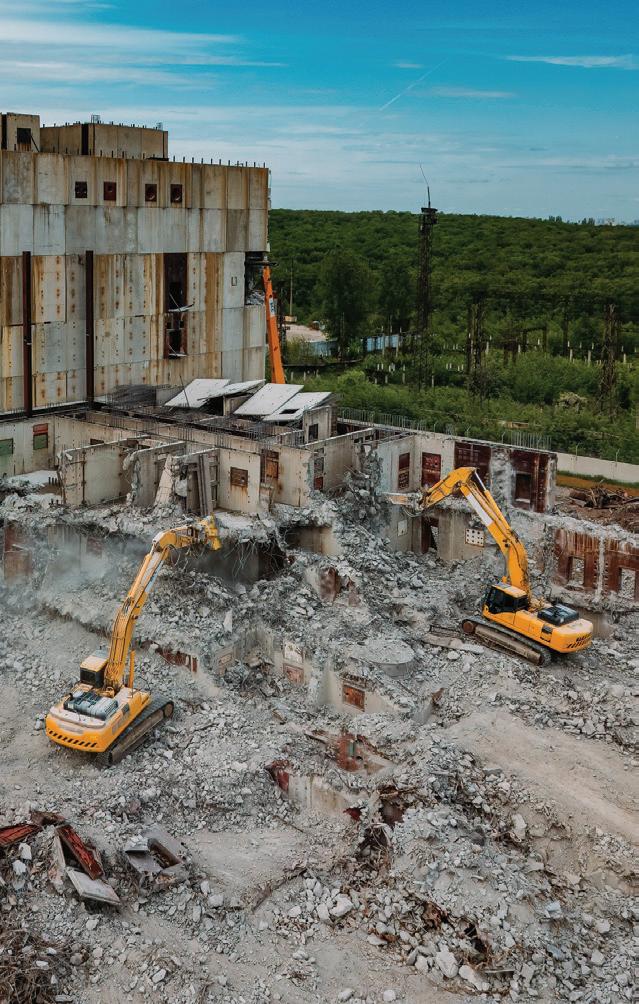
• Inadequate planning.
• Failure to communicate.
• Scope creep and changing of orders.
• Productivity issues and delays.
• Ignoring red flags.
Risk allocation is an important element in a contract and the general consensus is that it should be the responsibility of the party in the best position to deal with it. It is clear that proper contract management is required to mitigate the risks listed above.
contract management professional to plan in advance with consideration of the contractual, cost and schedule allowances and to create a timeline for the award of sub-contracts at the outset of the project.
This plan should allow sufficient time for quotations, contract negotiations and award of subcontract works in advance of the sub-contractor’s planned site mobilisation. Furthermore, a keen eye is required on material lead times to ensure that materials are delivered to the site punctually.
FAILURE TO COMMUNICATE
Effective communication is critical. From a contract management perspective, contract progress alignment among project stakeholders is imperative and helps ensure that the project objectives are met and expectations are managed. These could be addressed at a site meeting where participants could discuss, among other matters:
• Currently approved contract values.
• Expected final contract values.
Some considerations in addressing these issues are highlighted below.
INADEQUATE PLANNING
An example of inadequate planning is when a construction manager contacts a contract manager or quantity surveyor the day before a sub-contractor is required on site to execute certain sub-contract works. This then leads to hasty awards, without all the checkboxes being ticked. The ideal way to address this is for the
• Delays and how these are being dealt with.
• Co-ordination of work among the different direct contractors and sub-contractors.
• Scope creep and changing of orders.
In part 2 of this feature, scheduled for publication in SA Builder’s July 2023 edition, scope creep and productivity delays are explored further.
JUNE 2023 SOUTH AFRICAN BUILDER 13 MBA NEWS
(Above): Demolition of an abandoned construction site is often evidence of contractual problems ignored, or even impossible terms.
FOSTERING AN ETHICAL CULTURE FOR SA’S BUILT ENVIRONMENT
A discussion on ethics was part of the presidential function held by Consulting Engineers SA in Gauteng on 18 May. Inspired by a question from a young professional at the event, CESA president Olu Soluade explained that changing the current narrative of unethical practices in the built environment required a shift in attitude of the individual professionals in it.
Unethical practices and corruption in the built environment continue to have a direct impact on the growth, social well-being and financial health of SA’s economy. A sustainable future depends on the country’s ability to develop leaders with the highest ethical values and individuals refusing to be part of any corrupt activity.

“We’re at a critical time in SA’s history and find ourselves at a crossroads as a nation. There’s an urgent need to start putting plans into action as we work together to make a difference, but that difference has to start at home, with the individual, either as a client or service provider,” added Soluade.
Guest speaker at the event Realeboga Mahapa, acting deputy director-general for Health in the Gauteng Department of Infrastructure Development, added that ethics should be introduced as a course in the built environment curriculum at tertiary education
levels. “We have to develop a culture of ethics and, in doing so, assist in rooting out corruption. It may even be an idea to introduce higher CPD points for courses on ethics in the professional registration environment,” he said.
INTRODUCING ETHICS ACROSS ALL PROFESSIONS
Philip Booyens, CESA Gauteng’s branch chairperson elect, agreed and said it was imperative to start lobbying universities to introduce ethics as a course not just for engineers, but across all professions to enable a culture shift of young adults who were the future torch-bearers building and driving the country’s economy.
“While I support the introduction of courses around ethics at a university level and in the professional environment, I must emphasise the need for it to be inculcated at home and school long before that time, so as to create a generation who’re able to distinguish right from wrong. In doing so, we can reverse the current culture that seems to be prevalent in South African society.”
IT IS ABOUT BEHAVIOUR
Creating leaders for the future also hinged on the professionalisation not just of the state, but of the private sector, explained Dr Vishal Haripersad, a CESA board member. “Engineers in SA have a very important role to play not just in this country, but across Africa. We need to create a culture of African engineering excellence that will truly shape this continent.
CULTURE-BUILDING
LEARNING RIGHT FROM WRONG
However, the challenge of unethical practices and behaviour was not unique to the country’s built environment, explained Chris Campbell, CEO of CESA.
“With our strong belief in the capacity and capability of SA and African excellence, CESA’s focused on ensuring that we continue enhancing the capacity of engineers through the continued training and development of local talent. SA and the continent have a young, enthusiastic and competent population who should be included in the growth journey ahead and each and every one one of us has a responsibility to help develop and enhance that journey,” said Haripersad.

SOUTH AFRICAN BUILDER JUNE 2023 14 INDUSTRY NEWS
(Above): CESA president Olu Soluade and acting deputy director-general for Health at the Gauteng Department of Infrastructure Development, Realeboga Mahapa.
MASTERCLASSES &
Sustainabilit y, D igitisation & Inclusion
The South African Council for the Project and Construction Management Professions (SACPCMP) will present its Conference & Masterclasses on 13 & 14 November 2023.


Registration/Bookings open in June 2023. Venue to be announced soon. Visit www.sacpcmp.org.za for more information on sponsorship opportunities.

Save The Date
C onstructing Built Environment
PPC Ltd has been approved for a secondary listing on A2X Markets. Its shares have been available for trade on A2X since 30 May 2023.
PPC will retain its listing on the JSE and the Zimbabwean Stock Exchange and its issued share capital will be unaffected.
PPC is a leading supplier of cement, aggregates, ready-mix concrete, slag and fly-ash. Its story stretches back 130 years to when it was first incorporated on the outskirts of Pretoria in 1892, with seven integrated cement plants across South Africa, Botswana, the DRC, Rwanda and Zimbabwe with an annual capacity of around 11,6 million tons of cement.

LOCAL CEMENT AND CONCRETE MAJOR APPROVED FOR SECOND LISTING
GROWTH FOR CAPITAL MARKETS
“We’re excited to be joining A2X, which provides investors with an alternative venue to trade our shares – a platform that offers efficient and cost-effective trading. We’re also pleased to be supporting the development of SA’s capital markets through this listing.
“PPC is an iconic South African company that originally listed in 1910 and is one of only three public companies that have remained listed for over 100 years. We’re delighted to be welcoming a company
to our market next week with such a deep history that’s literally built SA,” says A2X CEO Kevin Brady.

The listing will bring the number of instruments listed on A2X to 129, with a combined market capitalisation of over R9 trillion.
TRADING IN THE NEW ECONOMY
PPC joins other well-known South African companies which are also listed on A2X, including AngloGold Ashanti, AVI, Coronation, Exxaro, Discovery, Growthpoint, Implats, Investec, Mr
Price, Naspers, Nedbank, Netcare, Prosus, Remgro, Sanlam, Sasol, Sun International, Standard Bank. WBHO and Woolworths.
A2X is a licensed stock exchange that provides a secondary listing venue for companies. It is regulated by the Financial Sector Conduct Authority and the Prudential Authority in terms of the Financial Markets Act.
SOUTH AFRICAN BUILDER JUNE 2023 16 INDUSTRY NEWS
(Above right): A2X CEO Kevin Brady.
(Above): The role of cement production in Africa has come a long way over the past decades and is modernising continuously, with advanced supply chains and ongoing R&D towards increasingly sustainable options for the construction industry across the continent.
NEAR-PERFECT HEALTH AND SAFETY MILESTONE ACHIEVED
A strong safety culture is at the heart of achieving industry-leading performance in health and safety with what is recognised as a “near-perfect” rating by industry standards, reports BTE Renewables.
The renewable energy sector is generally considered to be a safe environment. However, workers still face occupational threats, many of which are universal to other power generation facilities.
The total recordable injury frequency rate (TRIFR) is an indicator of the state of health and safety at any workplace and provides an idea of the organisation’s efforts to protect its employee from work-related hazards. BTE Renewables had only
one medical case that occurred in 2022, over the nearly 800 000 hours worked across six power plants in South Africa and Kenya, which is exceedingly low by both local and international standards.

“This exhibits our commitment to ensuring that all employees return home safely to their families every day, which is our ethos and our DNA,” says Robert Skjodt, the company’s CEO.
A NEAR-PERFECT SAFETY ACHIEVEMENT
This near-perfect health and safety achievement is one of the best milestones the company has achieved since it entered commercial operations and exceeds its target.
“We weren’t afraid to make drastic changes and committed financially to modernising our approach, which included adopting a ‘brother’s keeper’ mindset across all our sites, rather than relying on policing by management,” explains Leticia Vos, senior health and safety manager at BTE Renewables.
“We’ve taken a proactive approach to effectively mitigating and continually improving in this regard. In addition, we don’t allow non-conformance to our health and safety procedures, policies or any legislative requirements and are committed to keeping our TRIFR as low as possible during our operations.”
INDUSTRY NEWS
JUNE 2023 SOUTH AFRICAN BUILDER 17
PUBLIC-PRIVATE PARTNERSHIPS BEST SUITED TO ALLEVIATE SA’S MOUNTING WATER ISSUES
South Africa’s taps are at risk of running dry as its water supply infrastructure comes under mounting pressure. As millions go without reliable in-home water connections and water supply infrastructure buckles under the pressure of population growth, urbanisation and industrialisation, the 2023 World Water Day theme of “accelerating change” was especially relevant for South Africans and the Gap Infrastructure Corporation (GIC).
The lack of access to clean water in many rural areas is becoming increasingly critical, as water scarcity grows, leading to overcrowding at communal water taps and increased reliance on dirty or contaminated groundwater sources. The recent outbreak of cholera in Gauteng brought this grim reality home in an urgent manner.
According to the last General Household Survey by Statistics SA, an alarming 12,2% of households used a public tap as a source of water, 1,9% used a neighbour’s tap,
1,8% used flowing, stream or river water, 1,7% made use of a watertanker, 1,6% used a water vendor and 1,5% used a rainwater tank, among other alternative sources.
Adding to the country’s water scarcity woes is below-average rainfall. SA’s annual precipitation is almost half that of the global average at just 497mm per year.
“Given the high demands on SA’s water resources, it’s crucial that we prioritise the development of sustainable and easily accessible water infrastructure, such as boreholes or rainwater harvesting systems, and invest in upgrading existing water supply systems,” says Roelof van den Berg, CEO of GIC.

Community education in water conservation and efficient water use is also vital. Through teaching households water-wise habits, community education can help reduce the burden on shared water sources and ensure that more people have access to safe and clean water in their homes.
“World Water Day calls for increased efforts to promote water conservation, efficient water use and sustainable water management practices. It also emphasises the importance of innovative solutions and technologies to ensure that water resources are used more sustainably.
“Finally, the topic of ‘accelerating change’ was particularly relevant for GIC as a trusted construction partner in the drive to roll out reliable water infrastructure for the benefit of all South Africans,” says Van den Berg

SOUTH AFRICAN BUILDER JUNE 2023 18 INDUSTRY NEWS
(Below): Access to potable water remains a challenge in SA.
HARNESSING PRIVATE EXPERTISE FOR PUBLIC INFRASTRUCTURE

In the ongoing quest to improve infrastructure development nationally, public-private partnerships have emerged as an invaluable tool. These successfully bring together the expertise and resources of both private construction companies and government to deliver enhanced services.
The benefits companies can bring to the process are diverse:
1. Enhanced infrastructure roll-outs for businesses and households. Public-private partnerships are an effective way of increasing capacity, ensuring that more projects are undertaken simultaneously at a high-quality standard. By utilising these partnerships in the development of water infrastructure, South Africans can enjoy the benefits of new water treatment plants and upgraded water supply systems, while stimulating job creation and small business growth, as well as increased investment in new technology and innovations for world-class water and sanitation systems.
2. Expert planning and design for the environment and communities. Through proper planning and design, infrastructure development companies help ensure that projects are initiated and managed in environmentally sustainable and cost-effective ways. Drawing on deep infrastructure development expertise and experience, companies such as GIC further work to ensure that projects meet the needs of
specific communities. This includes developing comprehensive water and sanitation plans, identifying appropriate technologies and conducting feasibility studies and environmental impact assessments.
3. Professional project management for maximum returns on investment. The private sector can supply government with the required expertise, as well as the qualified and experienced staff needed to ensure the success of large-scale projects. Infrastructure development companies can manage construction contractors and sub-contractors, liaise with numerous suppliers and control operations to ensure that projects are completed on time and within budget.
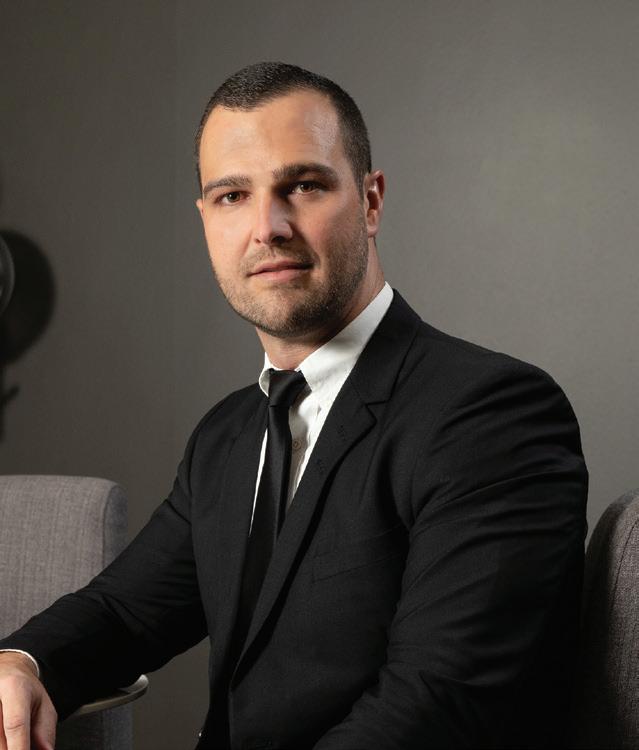
4. Community education and partnerships. Private companies can assist in launching and managing important learning and awareness programmes with communities, sharing responsibility with public entities for education and upliftment. For example, companies involved in water infrastructure development may roll out programmes teaching
community members about water conservation and efficient water use, and further provide technical training and upskilling to local workers in the construction, operation and maintenance of water and sanitation infrastructure.
Many of our country’s water issues, current and future, can be largely resolved by upgrading the country’s ailing water system and constructing new infrastructure in previously underserved areas. Public-private partnerships are the most suitable, sustainable and beneficial way to ensure that quality infrastructure is developed and implemented sooner, rather than later.
JUNE 2023 SOUTH AFRICAN BUILDER 19 INDUSTRY NEWS
(Above): Roelof van den Berg, CEO of GIC.
(Above): Public-private partnerships, community access and education, as well as conservation efforts, are all needed to eradicate temporary, inefficient solutions, like water delivery trucks.
SAWEA ADVOCATES GRID OPTIMISATION IN THE ABSENCE OF URGENT TRANSMISSION BUILD
If South Africa is to add a muchneeded 4-5GW of renewable energy generation capacity to the grid each year, solutions and efforts will need to be employed to optimise the existing transmission infrastructure capacity. This will allow Eskom more time to implement the Transmission Development Plan, which has now passed levels of urgency.
MULTI-PRONGED AND MULTI-MODAL SOLUTIONS
The employment of multiple solutions and improved energy mechanisms are required if another failed renewable energy independent power producer procurement programme bid window is to be avoided, says the SA Wind Energy Association (SAWEA).

“We’ve been engaged in efforts to tackle the issues regarding access to the grid and the unlocking of grid capacity since early 2022, while urging key stakeholders to prioritise the transmission build. However,
more than a year later, having reviewed the 2022/23 Grid Connection Capacity Assessment report, our industry’s aware that the areas of highest wind resource potential in the country are either already depleted or close to becoming depleted in terms of available grid capacity –a sobering reality that was already known before the last public procurement bidding round,” says Niveshen Govender, CEO of the SAWEA.
A multi-technology collaborative renewable energy task team, bringing together the wind and solar PV industry associations, has been working on the crucial task of addressing and overcoming the blockages preventing new renewable power generation from being connected to the country’s national grid.
“Following the Bid Window
6 upset, when not a single wind project advanced to preferred-bidder status owing to grid constraints in the
SOUTH AFRICAN BUILDER JUNE 2023 20 ASSOCIATION NEWS
Cape provinces, it’s become increasingly important to understand the methods that were used to allocate the grid capacity, ensuring fair and transparent processes so that we can ensure access for both private and public procurement,” adds Govender.
GRID ALLOCATION
While commending the work done by the Eskom team, the grid allocation rules need to be finalised to provide clarity to the market and reduce further delays in allocating grid capacity to renewable energy projects. Govender says the importance of the grid allocation rules extends beyond the short term because once the country has a more robust transmission system that sufficiently serves its energy needs, managing it optimally will be crucial.
ENERGY STORAGE AND CO-LOCATED RENEWABLES
Other short-term measures include the addition of the battery energy storage capacity bid window, already underway, which will add a capacity totalling 1 230MW in two bid windows this year and possibly co-locating renewable technologies across wind and solar PV, chiefly in resource-rich provinces.
By pairing wind and solar power plants, a single transmission connection point can be used more effectively, matching renewable energy generation profiles with energy demand. This will provide Eskom with increased uptake of power at a particular point. Grid-balancing and curtailment need to be considered
and well managed for such solutions to be employed. The SAWEA believes this is technically viable and envisages stakeholders working with the wind industry to create mechanisms that add generation capacity.
Since co-location of wind, solar PV and energy storage technologies offers more stable, predictable and dispatchable power output, the option of shared grid connections makes sense in efforts to optimise the current grid infrastructure.

“Beyond the economics, international examples of energyplanning demonstrate that colocation is a viable consideration because wind production peaks in the late afternoon and continues throughout the night, thus complementing solar production during the day. We therefore expect developers to seriously consider this measure, which offers feasible cost reductions that will benefit the country,” says Govender.

JUNE 2023 SOUTH AFRICAN BUILDER 21 ASSOCIATION NEWS
“BY PAIRING WIND AND SOLAR POWER PLANTS, A SINGLE TRANSMISSION CONNECTION POINT CAN BE USED MORE EFFECTIVELY, MATCHING RENEWABLE ENERGY GENERATION PROFILES WITH ENERGY DEMAND.”
(Above): Wheeling power into established grids, generated locally and consumable at both local and national grid level, requires the active participation of our regulator, focused on building a demonopolised industry.
(Above): Blending solar and wind generation at the local level delivers consistent energy production, drawing on the strengths of wellestablished, non-traditional generation sources, limiting C0 2 emissions to the construction and maintenance phases.
BIG 5 CONSTRUCT SOUTHERN AFRICA:
DRIVING ECONOMIC GROWTH, RECOVERY AND TRANSFORMATION IN THE CONSTRUCTION INDUSTRY
Big 5 Construct Southern Africa and co-located events will educate and inspire the industry with the latest trends, innovations and opportunities

The Southern African construction industry is resilient and has an optimistic future, with its output expected to increase by 3,2% this year, surpassing the 1,7% growth achieved in 2022. Recognising this progress and positivity is the next edition of the Big 5 Construct Southern Africa expo, with co-located events African Smart Cities Summit, the Big 5 Southern Africa Construction Impact Awards and the inaugural
Big 5 Southern Africa Construction Leaders’ Summit taking place at the Gallagher Convention Centre in Johannesburg this June.
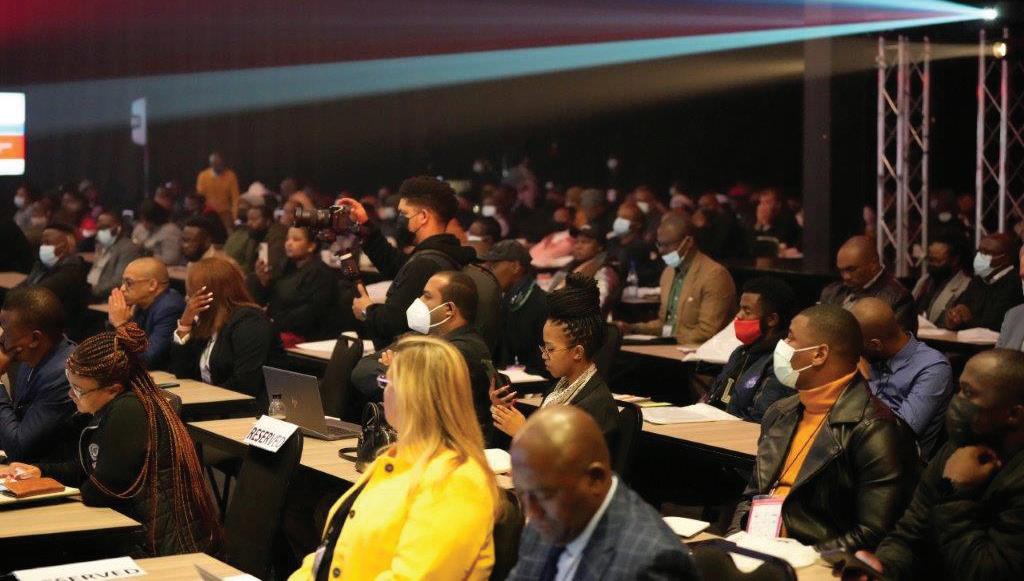
“These events are not only promoting upcoming projects, trends and opportunities in Southern Africa’s construction market, but celebrating the great work being done in the industry, inspiring even greater things and striving towards a futureproofed industry,” says Tracy-Lee Behr, portfolio director: built environment at events for DMG, the organiser behind them.
“The construction industry has faced challenges, but is in recovery. There are many opportunities and many professionals in the
industry with exciting ideas and fresh perspectives to share. These events will provide the chance to explore opportunities to collectively ensure industry resilience and growth.”
ONE-STOP SHOP FOR CONSTRUCTION INDUSTRY
The 10th annual Big 5 Construct Southern Africa, taking place from 27-29 June, offers contractors, engineers, architects, quantity surveyors, designers and propertyowners a one-stop shop to identify viable opportunities and materials to complete projects efficiently and on budget.
The African Smart Cities Summit will take place on 28 June 2023 and is Africa’s only dedicated
SOUTH AFRICAN BUILDER JUNE 2023 22 EVENT NEWS
conference exploring the benefits of smart cities enabled through economic growth in the Internet of Things, technology and creative thinking.
The first Big 5 Southern Africa Construction Leaders Summit takes place on 29 June and will unite high-level decision-makers, essential industry stakeholders and premier service providers to converse, deliberate and propel the advancement of infrastructure construction and development within the SACU region.

An invitation-only event, the Big 5 Southern Africa Construction Leaders Summit promises a gathering packed with experts from government to specialist funding institutions leading interactive panel discussions and keynote sessions on leadership, investment and partnership opportunities, and more.
Project-owners across sectors, institutional and private investors, funders and financiers will benefit from attending this event.
The Big 5 Southern Africa Construction Impact Awards on 27 June have been created as a platform to celebrate the achievements and transformation of the construction industry that go beyond traditional measures of project delivery.
These events serve as a hub for the Southern African construction industry and combine more than


CONCRETE ALL THE WAY
The
year’s Big 5 Construct Southern Africa. “It’s a privilege to be affiliated with events that are tailored to our industry and that stand for promoting innovation and professionalism. We look forward to engaging with the many stakeholders and representatives who’ll come together to showcase new ideas and determine the way forward to ignite further progress in the construction sector within Southern Africa,” says Henry Cockcroft from the association.
“Uniting as an industry to address and solve the current problems allows us to reflect on how far we’ve come and what we can do together to make the most of the future. These events will offer unrivalled networking and deal-making opportunities, combining all facets of construction infrastructure in Southern Africa and aren’t to be missed,” says Behr.
Register to attend Big 5 Construct Southern Africa and co-located events at: https://www.thebig5constructsouthernafrica.com.
JUNE 2023 SOUTH AFRICAN BUILDER 23 EVENT NEWS
200 exhibitors and more than 30 associated partners.
Concrete Manufacturers Association (CMA) is among the associated partners with this
The annual commemoration of Africa Day marks the founding of the Organisation of African Unity (OAU – now called the African Union) in 1963. This year, 2023, is the diamond jubilee year of the organisation, a continental body representing 55 member states that make up the continent. While the anniversary is being celebrated under the slogan “Our Africa, Our Future”, the real vision is the implementation and acceleration of the African Continental Free Trade Area (AfCFTA).
THE AFCFTA
Once fully implemented, the trade pact will create the world’s largest free trade area for goods and services across member states and deepen economic integration within the continent. The trade area created by this agreement is expected to have a combined gross domestic product of approximately $3,4 trillion.
Adopting the AfCFTA is also expected to enhance mobility, bringing transformation and tremendous economic and business opportunities.
ACCELERATING INFRASTRUCTURE DEVELOPMENT TO PROMOTE INTRA-CONTINENTAL TRADE

According to the World Economic Forum, the pact will give investors unparalleled access to a population of 1,7 billion people and consumer spending reaching $6,7 billion by 2030. The report highlights automotive, agriculture and agroprocessing, logistics, pharmaceuticals, and transport and logistics as the four sectors expected to see a rapid acceleration in production and trade volumes, since they have a high potential to meet demand with local production.
THE POTENTIAL OF INTRA-AFRICAN TRADE

Currently, intra-African trade accounts for approximately 14% of total trade in Africa, compared with significantly higher percentages achieved by Europe, North America
and ASEAN, which have reached intra-regional trade levels of around 60%, 40% and 30%, respectively. To address this disparity, the AfCFTA aims to facilitate the growth of intra-African trade by eliminating trade barriers, harmonising trade rules and fostering synergies among African nations.
“Goods don’t move independently,” says George Asamani, MD: Sub-Saharan Africa at PMI. “Infrastructure is among the key elements essential to making the AfCFTA work effectively. The development and improvement of power, transport and communications infrastructure and the establishment of efficient road, air, port and rail networks are crucial for enabling seamless trade facilitation and promoting economic integration.”
SOUTH AFRICAN BUILDER JUNE 2023 24 PROJECT MANAGEMENT
(Above): George Asamani, MO: Sub Saharan Africa, PMI
(Above): Residential property development, especially in the cases of complexes and multipurpose developments rely on the efficiencies available from experienced construction project management.
South Africa, the continent’s most industrialised economy, is the largest intra-African trading nation, accounting for about 20% of total trade. After recording the fastest growth rate in 2021, Southern Africa’s share of intra-African trade increased to account for more than 44% of total intra-African trade.
GUIDED TRADE INITIATIVE
The Southern African region is represented by Mauritius, which joins Cameroon, Egypt, Ghana, Kenya, Rwanda, Tanzania and Tunisia in the AfCFTA’s Guided Trade Initiative (GTI). The GTI seeks to allow commercially meaningful trading and to test the operational, institutional, legal and trade policy environment under the AfCFTA. At least 96 products will be traded under the initiative, which will be reviewed annually to expand the list of countries.
“Increasing intra-African trade will bring numerous benefits to the continent, such as industrialisation, economic diversification and the development of natural resources, commodities and agricultural produce. However, it’s important to acknowledge that this growth will significantly burden the associated infrastructure, like roads, railways, power, ports and telecommunications,” says Asamani.
“There’ll be substantially increased demand for new industrial parks and special economic zones. These parks need to be financed and built.”
INFRASTRUCTURE AS THE ECONOMIC ENGINE
The African Development Bank estimated that Africa needs
infrastructure financing of $130170 billion annually (pre-Covid-19), given its rapid population growth and urbanisation. SA’s infrastructure investment gap will reach $293 billion by 2030 unless it increases investment to meet the targets set under the National Development Plan.
“It’s abundantly clear that the AfCFTA is the cart and infrastructure will be the horse that pulls it forward. Mega-projects will be crucial to the future of the AfCFTA, but the problem is that these projects often go off the rails, regarding either budget or time – or both. For the AfCFTA to succeed, Africa must engineer a skilling revolution. Never have the stakes been so high to ensure the timely execution of projects,” says Asamani.
PROJECT MANAGEMENT OPTIMISES ECONOMIC ENGINE PERFORMANCE

According to the latest research conducted by the Project Management Institute (PMI), effective project management practices have significantly improved project success rates. The PMI Pulse of the Profession report highlights the value of project managers in navigating complexities, mitigating risks and seizing opportunities, ultimately ensuring the seamless execution of initiatives.
“Given the scope and objectives of the AfCFTA, it’s crucial to identify and develop the project management skills needed to support its successful implementation and operation. At the PMI Africa Conference, we’re bringing together industry experts and stakeholders to share their views and insights into building a skills base which is equipped to execute on the significant opportunities presented by the pact. We’re hopeful that the discussions will inform policy decisions, facilitate collaboration between public and private sectors, and place more project professionals in leadership roles within the AfCFTA,” says Asamani
“There’s a pressing need for competent and qualified project managers to deliver projects to a high standard, as efficiently and effectively as possible. As these projects come to fruition, they’ll contribute to the acceleration of the AfCFTA by facilitating smoother trade flows, enhancing connectivity and driving economic growth in SA and across the continent.”
The highly anticipated PMI Africa Conference will take place from 10-12 September in Nairobi, Kenya. It will focus on skills transformation, youth empowerment, women in project management and accelerating Africa’s infrastructure development under the theme “Africa, We Want: Together We Can”.
JUNE 2023 SOUTH AFRICAN BUILDER 25
PROJECT MANAGEMENT
(Above): Depending on project complexity, the approach to project management in construction needs to account for client and contractor teams.
AI AND YOUR BUSINESS: HERE TO HELP – NOW
By Filum Ho, CEO: Apollo Studios

Technology is moving so quickly that many business-owners might feel overwhelmed by all the sudden hype about artificial intelligence (AI), ChatGPT and other trends.
We are still coming to terms with what this technology means and how we can use AI in any meaningful way.
However, automation is a related, but different field to AI and it is something that has been with us for a longer period, having been practically implemented by many companies in diverse sectors to gain efficiencies.
One growing part of the automation ecosystem is something called robotic process automation (RPAs), commonly referred to as “bots” or “bot workers”.
This form of technology involves software programs which mimic repetitive human actions to perform various assignments, ranging from data entries in CRM systems to automated invoicing, text recognition and more.
RPAs can operate 24/7 and be used for different industries, from finance to insurance, automotion, healthcare and others.
This technology used to be the domain of larger companies, given the excessive costs. However, it is increasingly becoming available to all sizes of businesses – especially SMEs. If used correctly, SMEs can dramatically benefit from RPAs and level the operating playing field with larger competitors. This, in turn, can help SMEs grow faster and create more jobs for South Africa.

Here are five ways in which SMEs can benefit from RPAs:
AUTOMATING REPETITIVE TASKS
SMEs are often burdened with repetitive tasks that consume valuable resources and time. Bot workers excel at handling such tasks by emulating human actions, enabling SMEs to automate processes such as data entries, invoice processing, inventory management and other tasks. This automation further eliminates errors caused by manual entry, improves efficiency and frees human employees to focus on more strategic and value-added activities. Consequently, a business can enhance its productivity, reduce operational costs and allocate its workforce to tasks that require human intelligence and creativity.
SOUTH AFRICAN BUILDER JUNE 2023 26 BUILDING BUSINESS
(Above): Filum Ho, CEO: Apollo Studios.
(Below): Robotic process automation (RPA) – or bot Workers – perform repetitive human actions to great economic advantage and are now accessible to SMEs.
ENHANCING CUSTOMER SERVICE
Customer service is a crucial aspect of any business’s success and SMEs can leverage bot workers to optimise in this area. Chatbots and virtual assistants powered by a RPA can handle routine customer enquiries, provide instant responses and even perform basic troubleshooting tasks. By automating these interactions, smaller businesses can offer round-the-clock support, enhance response times and provide consistent service quality.

STREAMLINING SUPPLY CHAINS
Efficient supply chain management is essential for businesses of all sizes to meet customer demands, reduce costs and remain competitive. RPAs can streamline various aspects of the supply chain, such as inventory management, order processing and logistics tracking. By automating these processes, bot workers ensure accurate data entry, real-time monitoring and seamless co-
ordination among different stakeholders.
IMPROVING DATA ANALYTICS

Data is a valuable asset, especially for smaller businesses, and RPAs can play a pivotal role in extracting meaningful insights from large volumes of information. Bot workers can analyse data from multiple sources, identify patterns, generate reports and provide real-time analytics. This enables businesses to make datadriven decisions, identify market trends, personalise customer
experiences and improve overall business strategies. By harnessing this power, SMEs can gain a competitive advantage and react quickly to changing market dynamics.
SCALING OPERATIONS WITH AGILITY
SMEs often face challenges when scaling their operations due to limited resources and manual processes. Bot workers offer the flexibility and scalability required to expand business operations seamlessly. Whether it is onboarding new employees, managing additional customer accounts or handling increased order volumes, bot workers can adapt to changing demands without compromising efficiency.
At Apollo Studios, we have been a pioneer in introducing this technology to more businesses in SA.
However, given the country’s unemployment challenges, it is also crucially important to highlight how RPAs can be a force for good
JUNE 2023 SOUTH AFRICAN BUILDER 27 BUILDING BUSINESS
(Left and below): AI and robotics are a powerful combination, unlocking automation from the confines of the desktop.
“CHATBOTS AND VIRTUAL ASSISTANTS POWERED BY A RPA CAN HANDLE ROUTINE CUSTOMER ENQUIRIES, PROVIDE INSTANT RESPONSES AND EVEN PERFORM BASIC TROUBLESHOOTING TASKS.”
by requiring companies to upskill and further develop their staff.

There are many options in this regard, with programmes in South Africa ranging from adult matric to other accredited certifications in aspects such as accounting and HR.

Furthermore, companies in SA can receive tax rebates and additional BBBEE points for upskilling their staff. In fact, the skills development pillar of the BBBEE Act can contribute up to 20 points of a company’s BEE rating.
The age of automation and AI are in full swing and how we navigate it now will help us derive the most benefits from it, going forward.

CREATE A LIFETIME BOND WITH MAPEI























































MAPEI offers a complete range of high-quality adhesives for ceramic, porcelain and stone materials. MAPEI stays up to date with growing trends and technology within the market, making it the ideal application solution.








The range includes:




• Polymer modified cementitious adhesives





• Deformable cementitious adhesives


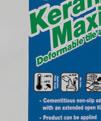



















• Fast-setting levelling compounds


• Reactive resin polyurethane and epoxy adhesives




















• Water repellent cementitious grouts



• Water based epoxy grouts


BUILDING BUSINESS
more at mapei.co.za
Email: info@mapei.co.za
Learn
Tel: +27 11 552 8476
“SMES OFTEN FACE CHALLENGES WHEN SCALING THEIR OPERATIONS DUE TO LIMITED RESOURCES AND MANUAL PROCESSES.”
(Right): RPAs, smartly deployed in SA, will create jobs and increase opportunities for skills and training – establishing new businesses, with established tax rebates and BBBEE points for all companies.
SELECTING A DEWATERING PUMP
When specifying a centrifugal pump for a dewatering project, a key concept to understand is the head, according to Steve du Toit, rental development manager at pump and dredging dewatering specialist IPR
With over 16 years in the pump dewatering business, IPR has both a wide range of pumps to choose from and the expertise to guide customers to selecting the right one, says Du Toit. The company was recently appointed by leading pump brand Atlas Copco as a master distributor for the Southern African region for its extensive range of dewatering pumps.


THE PUMP HEAD – RELATIVE TO FLUID DENSITY AND PRESSURE
“In layman’s terms, the pump head
is the height to which a pump can raise fluid – measured in metres or feet,” he explains.
He stresses that head can sometimes be confused with pressure, as there is a close relationship between the two parameters. However, there is one fundamental difference: head is independent of the fluid characteristics, including its specific gravity (which is also referred to as relative density).
“In other words, regardless of the fluid’s relative density, the pump will lift it to the same height. It therefore doesn’t matter whether the fluid’s just water or heavy sludge,” he explains.
On the other hand, pressure is dependent on the fluid being pumped and is affected by gravity.
As a result, the same head will generate a different pressure, depending on the fluid’s relative density.
“Suction conditions are also relevant to the pump head,” says Du Toit. “So if the suction level’s lower, the head measured will be less.”
THE ROLE OF FRICTION
What the motor of the pump essentially does is convert electrical energy into mechanical energy.
JUNE 2023 SOUTH AFRICAN BUILDER 29 FEATURE
(Top): The Atlas Copco Weda submersible pump range includes models that are suitable for high head applications.
(Above): When specifying a centrifugal pump for a dewatering project, a key concept to understand is the head.
FEATURE
This energy is then imparted into the fluid as pressure. When the suction level is raised or reduced, the potential pressure of the liquid is adjusted accordingly. The more pressure a pump can deliver, the higher the head will be.
“Of course, pump manufacturers can’t know your suction level parameters, so they calculate the pump’s total head,” says Du Toit. “This is done by subtracting the total suction head – measured as height above sea level – from the total discharge head.”

He notes that the next important consideration is the amount of friction. There are substantial losses in the pumping circuit due to friction, depending on the length and diameter of the pipe itself, as well as the bends and gate valves through which the fluid flows.

“The sum of the head and friction loss will result in the total head, which is a more reliable indicator of pump performance than pressure,” he says. “The total head indicates
what the pump can do, regardless of the suction conditions. When combined with your flow requirement, the total head will allow you to choose the right pump.”
ASSESSING PERFORMANCE: FLOW RATE VS HEAD CURVE
Finally, the performance of a pump at a certain speed – or revolutions per minute (RPM) – can be found in the manufacturer’s data sheet. There it will be
displayed as the flow rate (Q) vs head curve. The flow will have zero or little flow at its maximum head, which is also sometimes called the shut-off head. Pump-users need to ensure that the pump they choose has enough flow at the head they require.
“Remember that this selection procedure only applies to centrifugal pumps,” says Du Toit. “Piston pumps can provide more pressure and they’re selected based only on flow.”
He also notes the difference in flow units used in North America, which uses US gallons per minute, and countries using the metric system, where fluid flow is measured in terms of litres per minute, cubic metres per hour and litres per second.
“When making your selection, ensure that the units being referred to by OEMs and service providers align with the units you’re using for your calculations and planning,” he cautions.

SOUTH AFRICAN BUILDER JUNE 2023 30
(Left): The Atlas Copco Weda D95 submersible pump is capable of pumping at a high head.
(Left): The Atlas Copco PAC H64 diesel-driven pump is ideal for high head applications.
(Right): Set-up conditions are critical for any pumping operation, especially where a high head is required.
EMPOWERING CONSTRUCTION WITH COMPREHENSIVE
TURNKEY BASEMENT SOLUTIONS
Keller Geotechnics SA, a leading specialist geotechnical contractor in the country, takes pride in offering complete turnkey solutions for basement structures. With extensive expertise in managing every stage of the process, from detailed design to construction, it delivers comprehensive solutions that prioritise safety, quality and sustainability.
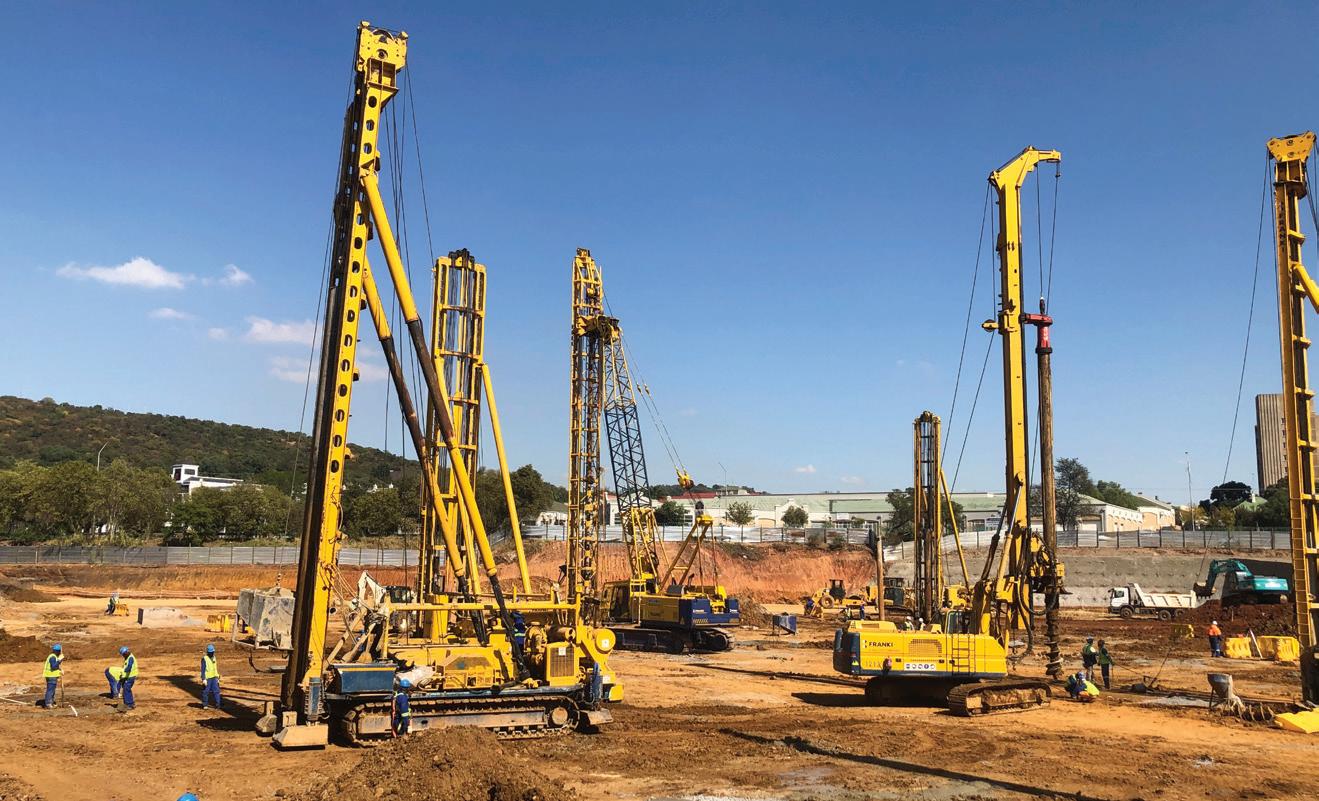
COMPREHENSIVE SOLUTIONS FOR COMPLEX BASEMENTS
“We tackle all the really challenging tasks that face a client,” says Roger Feldmann, Keller’s business development manager. “From demolition of old buildings to bulk earthworks and providing lateral support, Keller understands clients’ needs and leverages its experience and cutting-edge techniques to
meticulously execute all aspects of basement construction.”
COMMITMENT TO BUDGET, TIMELINESS AND QUALITY
Keller excels in delivering basement structures within budget and on schedule, without compromising quality. It understands its clients' financial constraints and works closely to optimise resources and streamline operations. Through efficient project management and a focus on timelines, Keller consistently meets deadlines and exceeds clients’ expectations.
SAFETY, QUALITY AND SUSTAINABILITY AT THE FOREFRONT
Safety, quality and sustainability are paramount to Keller throughout the entire project life-cycle. Stringent safety
protocols ensure the well-being of the workforce and all project stakeholders. Additionally, the company is committed to incorporating sustainable practices into its construction methods, minimising the environmental impact of basement structures and contributing to a greener future.
FULL PROJECT MANAGEMENT FOR SEAMLESS EXECUTION
A hallmark of Keller's turnkey enabling work packages is its comprehensive project management approach. From project initiation to final completion, the team provides end-to-end management, ensuring seamless execution of the entire process. “Close co-ordination of our specialist sub-contractors is key to a successful outcome,” comments senior contracts manager Jim Oldknow. “Clients enjoy one point of contact for the entire basement package, trusting Keller to handle all project requirements while they focus on their core activities.”
With its full project management services, Keller offers clients a seamless and efficient experience, providing the confidence to rely on their expertise. As a trusted partner in construction, it continues to drive excellence and innovation, contributing to the realisation of complex basement structures across South Africa.
JUNE 2023 SOUTH AFRICAN BUILDER 31 SPONSORED FEATURE
BRAVE NEW WORKING WORLD
The Covid-19 pandemic prompted a massive global shift in the way businesses operate and opened the doors for alternative workplace models
The Broll Property Group’s divisional executive for group human capital, Noleen Feddern, says a key trend the property company has noted is businesses co-creating the new world of work with employees. She says this has been a valuable exercise for the group for various reasons – including the fact that the workplace has evolved from a pre-pandemic highly structured corporate environment with minimal flexibility to a hybrid working situation where employees come into the office a few days a week and work from home the rest of the time.


The group believes that if properly managed, this increased flexibility will allow for greater productivity and promote employee well-being. “The pandemic taught us that meetings can take place virtually
and people can work from home and be productive.
“The more flexible work schedule allows our employees to attend cricket matches or spend time with the family, with the understanding that they have certain work responsibilities and deadlines to meet. This scenario has allowed them to take control of their lives and get the best effective outcome for themselves,” says Feddern.
Employees in the business have suggested that nonfinancial rewards often mean more to them than financial ones.
“We’ve found that providing
our employees with greater flexibility has the knock-on effect of engendering greater loyalty to the business. This is because they feel the company has their backs, which has prompted them to give more back to the business in turn,” she adds.
IN PURSUIT OF A WORK-LIFE BALANCE
The new hybrid working model has contributed to improved employee morale at Broll. “Hybrid working has encouraged a greater work-life balance. This makes for happier and healthier employees, as well as improved output. I don’t have statistics to support it yet, but I believe it’s
SOUTH AFRICAN BUILDER JUNE 2023 32 FEATURE
(Right): The Broll Property Group’s divisional executive for group human capital, Noleen Feddern.
positive for the business, because employees who’re happy at work are more productive and able to build better relationships with their clients,” says Feddern.
Efficiencies also seem to have improved at the property company. “Instead of spending an hour or more in traffic to get to clients, Broll employees often conduct virtual calls, which allows them to respond to issues more quickly,” she explains.


Of course, working from home can come with its own complications, such as not being able to switch off from calls and e-mails. The pandemic compelled Broll to focus on the emotional and mental wellbeing of its employees.
“We needed to ensure our people weren’t suffering from burnout, that they weren’t spending all their time in front of their computers and that there was a tangible divide between work and home. We had to coach them in switching off and spending time with their families. This meant conducting regular check-ins with them and providing them with the skills they needed to cope with their changing work environment,” says Feddern.
Communication has become paramount at Broll. “The pandemic taught us that while it’s possible to adapt and pivot quickly, it requires the collaboration of our people. After all, they’re our most important assets. The only way we can stay in touch, check their wellbeing and provide coping skills is through consistent communication via multiple channels,” she says.
NAVIGATING THE LOAD-SHEDDING NIGHTMARE

While load-shedding and its attendant connectivity challenges have compelled many more people to work at the office, Feddern says employees are encouraged to work around their load-shedding schedules.
“Our flexible model allows our people to plan around power outages. If they’re coming into the office, they can plan their timing to miss traffic that’s worsened by load-shedding. If they know they won’t have connectivity for critical meetings, they’re encouraged to
come into the office, where we have back-up power solutions.”
THEN AND NOW
She says that before the pandemic, many people voiced a wish to work exclusively from home. “Then their wish came true. However, after a while, isolation set in and it wasn’t that great after all.
“While it’s clear that some employees enjoy working from home, we’ve noticed that many people don’t enjoy the detachment of constantly working in a virtual environment. Many need to interact in person. They want to be in the same room as their colleagues and collaborate over a cup of coffee.
“While this is an evolving space, I think the Broll Property Group is close to finding the sweet spot in affording our people greater accountability, with the understanding that we need each other to succeed.
“As our CEO, Malcolm Horne, says: ‘There’s been an enormous amount of growth in our people’s ability to be agile, learn new skills, collaborate and become solutionsdriven.’ I think that sums it up perfectly,” she adds.
JUNE 2023 SOUTH AFRICAN BUILDER 33
FEATURE
“THE NEW HYBRID WORKING MODEL HAS CONTRIBUTED TO IMPROVED EMPLOYEE MORALE AT BROLL.”
(Above): Reining in the benefits of a hybrid working model can increase productivity with a shared impetus to succeed.
(Above): Freedom from navigating traffic jams while finding effective ways of managing load-shedding and unforgiving deadlines are all part and parcel of taking care of SA's shared well-being.
QUALITY SYSTEMS UNDERPIN CONCOR’S
BUILD-TO-LAST APPROACH
For infrastructure and buildings to deliver their fullest value, they must embody the highest quality of construction. With its buildto-last philosophy, Concor Construction puts quality at the heart of its approach, applying excellence in workmanship and stringent standards at every project stage

Quality construction is the foundation upon which infrastructure and buildings can stand the test of time, providing the most value for all stakeholders. including clients, users and the broader economy.


David Akinnusi, quality manager at leading blackowned contractor Concor Construction, highlights that this principle is at the core of the company’s build-to-last philosophy. With its track record of more than 150 years of construction experience, it continues to imbed quality through its depth of expertise and dedication to quality assurance and quality control (QA/QC), he says.
“Looking back at the iconic landmarks we’ve built over the decades, our commitment to this philosophy is well proven,” he says. “These mega-structures range from the Greenpoint Stadium in Cape Town, the Pavilion shopping centre near Durban and the mega
SOUTH AFRICAN BUILDER JUNE 2023 34 FEATURE
(Above): Levelling the top track of the southern ground floor façade at 5 Parks Boulevard so that the design level is kept, the façade is installed at the correct level and there is a constant line between concrete and the façade panels.
(Left): Quality control during anchor block installation at the Msikaba Bridge Project was very important.
(Above): Quality control forms an integral part of the Kendal Ash Disposal Facility project.
“THE KEY ELEMENTS OF CONCOR’S QUALITY CONTROL SYSTEMS ARE ITS DETAILED PROCEDURES, WHICH ENSURE OPERATIONAL STANDARDISATION ACROSS ALL PROJECTS.”
Menlyn Mall to our current work on the Msikaba River bridge in the Eastern Cape.”
He stresses that the key elements of Concor’s quality control systems are its detailed procedures, which ensure operational standardisation across all projects. The company puts designated QA/QC personnel on each project to monitor and ensure compliance to internal and external requirements and specifications.
“At the planning stage, for instance, our contract directors and estimating teams undertake detailed tender reviews to fully understand the project’s resourcing, scheduling and costing requirements,” he explains. “Drawings are then generated at design stage for construction by professionally registered engineers, with collaborative efforts to identify and address any constructability concerns.”

Strict quality control plans are also compiled for the execution stage and agreed upon by the contractor and client. These plans outline the specific testing and inspection required for the different trades employed for each project. This attention to detail continues through the handover stage, when the structures are handed over to clients through trade data book reviews.
“Our clients are contractually allowed to snag the works to ensure handover is done to their satisfaction,” says Akinnusi. “A contractual defects liability period is applied to each project and,

depending on the latent defect root cause, Concor remedies defects that arise during that time.”
Concor applies a rigid nonconformance system which determines root causes of defects, as
well as corrective and preventive measures. Post-project reviews are conducted to ensure that lessons learnt are effectively captured and applied to the next project. The company is also transitioning to digital inspection systems for improved efficiencies and data analysis.

Akinnusi stresses that Concor’s quality regime is aligned with world-class industry standards, including being certified in terms of the ISO 9001 quality management requirements. It does the same in the fields of health and safety (ISO 45001) and environmental management (ISO 14001).
“These standards ultimately give effect to the quality of structures we build for our clients,” he says. “We’re also members of well-established and credible construction industry bodies such as the Master Builders Association, the Construction Industry Development Board and the Green Buildings Council of SA.”
JUNE 2023 SOUTH AFRICAN BUILDER 35 FEATURE
(Above): Backfilling and compaction of G5 materials in layers of 150mm in preparation for the delivery and installation of the mini-substation for 5 Parks Boulevard.
(Above): Concor workers ensuring that concrete screed is floated to the correct level, so that that the surface and interface between new and old concrete is finished the right way to allow following trades to continue without any reworking.
(Below): Work on the Trevenna Super Basement project was undertaken applying stringent quality control processes.


CONCRETE AND CARBON:
REDUCTION CASE STUDIES IN THE USA
By Joann Gonchar, FAIA
Concrete has a carbon problem, with an estimated global annual contribution of 11%. Even though it makes up only 10-15% of the finished material by volume, cement is the primary contributor to concrete’s environmental footprint, due to its manufacturing method: raw materials, consisting chiefly of crushed limestone, are heated in a kiln to about 1 482˚C, causing the kiln’s contents to react and partially fuse. This chemical reaction, known as calcination, produces a rock-like substance called clinker, which is then ground to produce cement. The energy required to maintain the kiln at the required temperatures naturally generates carbon, but so does the calcination process itself, which releases CO2 and is responsible for about 60% of the emissions of cement. This means that the most significant component of concrete’s carbon footprint is impossible to avoid unless the need for cement or clinker is reduced or eliminated.
ESTABLISHED CARBON REDUCTION METHODS

There are already some wellestablished strategies for reducing the proportion of cement in concrete. Contractors have long used so-called supplementary cementitious materials to replace
some amount of cement in a typical concrete mix. Among the most common are fly-ash and ground granulated blast-furnace slag, both waste products of other industrial processes, fly-ash of coal combustion – usually at power plants – and slag of iron smelting.
New York-based Amanda Kaminsky is director of sustainable construction for the Americas at developer Lendlease and a former principal of Building Product Ecosystems, a public-private partnership focused on material circularity. She notes that ground-

JUNE 2023 SOUTH AFRICAN BUILDER 37 INNOVATION
(Above): Amazon’s Seattle, USA headquarters incorporated several carbon reduction efforts, while its new distribution centre in Arlington, Virginia, incorporates concrete using CarbonCure.
(Left): The bio-cement manufacturing process developed by Prometheus includes microalgae bioreactors.
“CONTRACTORS HAVE LONG USED SO-CALLED SUPPLEMENTARY CEMENTITIOUS MATERIALS TO REPLACE SOME AMOUNT OF CEMENT IN A TYPICAL CONCRETE MIX.”
27 - 29 JUNE 2023
GALLAGHER CONVENTION CENTRE, JOHANNESBURG, SOUTH AfRICA
CONNECT WITH SOUTHERN AFRICA’S CONSTRUCTION INDUSTRY



Get ready to experience the ultimate construction event of the year. Big 5 Construct Southern Africa is celebrating its 10th edition and you’re invited!
Big 5 Construct Southern Africa is a significant contributor to the economic growth, recovery and transformation within Southern Africa’s construction industry with a special focus on facilitating buyer/seller face-to-face connections and showcasing the most innovative solutions for the region.

Join thousands of your construction industry peers for three days of valuable business and gain FREE access to:
GROW your network with over 8,500 construction industry professionals
DISCOVER the most innovative products and technologies available
ENGAGE with public and private sector stakeholders over the most critical issues
LEARN about the latest trends, best practice and upcoming construction projects

REGISTER FOR FREE NOW
Simply scan the QR code with your phone’s camera app
Co-located with:
www.thebig5constructsouthernafrica.com
SOUTHERN AFRICA SOUTHERN AFRICA SOUTHERN AFRICA
glass pozzolan (GGP) – sourced from post-consumer bottles and jars that might otherwise go to a landfill – is gaining some traction, since American Society for Testing and Materials (ASTM) standards on its use in concrete were published in 2020. GGP “scratches a few itches, both on the construction supply chain side and on the municipal recycling side”, Kaminsky says.
EMERGING CARBON REDUCTION STRATEGIES

Rather than replacing cement, other strategies for reducing concrete’s environmental impact aim to use the material as CO2 storage, including the one commercialised by Halifax, Nova Scotia-based CarbonCure Technologies. Its process, which the company licenses to concrete producers, injects waste CO2 from industrial gas suppliers into raw concrete, where it chemically bonds with cement and creates calcium, increasing the mix’s
compressive strength and thereby reducing the total amount of cement needed. On average, the technique cuts CO2 by 12kg per cubic metre of concrete, according to CarbonCure. To date, the company has licensed its technology to more than 700 customers in more than 30 countries.


About 90% of the concrete used in the ZGF-designed headquarters for The Amazon now nearing completion in Arlington, Virginia, incorporates CarbonCure. The mixes for the foundation, columns and shear walls for the twobuilding, 92 903m² complex replace about half the cement with slag.
“Introducing waste CO2 into the mix achieves a modest reduction, but combine it with other approaches and the benefits all add up,” says Michael Cropper, a vice-president at Thornton Tomasetti, the project’s structural engineer.
Some of the more emergent solutions for concrete’s carbon problem take their cues from nature. Prometheus Materials, for instance, makes a product that starts with microscopic algae, which naturally sequesters carbon. Based on the research of a team of scientists and engineers at the University of Colorado, Boulder, the technology depends on a patent-pending photosynthetic biomineralisation process. The resulting “bio-cement”, when mixed with aggregate (the granular material in concrete, often quarried rock and sand), creates a zerocarbon building material with physical properties similar, though not identical, to those of concrete.
RETHINKING AGGREGATES
Los Gatos, California-based Blue Planet Systems has taken a different tack. Rather than focusing on cement, the company is rethinking aggregate, since it is the largest component of concrete, comprising up to 90% of the material by weight. At its Bay Area pilot facility, Blue Planet captures the CO2 emitted by a nearby natural gas-fired power plant, combining it with alkaline industrial waste materials, including concrete demolition debris. The resulting reaction “grows” calcium carbonate that is 44% CO2 by mass. According to the company, 0,7m³ of concrete using its product in place of conventional aggregate can permanently store 508kg of CO2 , more than offsetting the 274kg of carbon that would typically be embodied in that concrete, making it carbon-negative.
JUNE 2023 SOUTH AFRICAN BUILDER 39 INNOVATION
(Above): Demo projects using Blue Planet aggregate include new structures at San Francisco International Airport.
OIL-FREE TRANSFORMERS CHANGE OPTIONS ACROSS ESSENTIAL SECTORS
With its focus on hygiene and clean working environments, the food and beverage industry has been a keen adopter of dry-type transformers in its electrical installations, according to Trafo Power Solutions’ MD David Claassen. The company has designed and installed dry-type transformers for customers that include the world’s largest brewers. The absence of oil in dry-type transformers makes them attractive to the food and beverage sector, where the focus is on hygienic working conditions.
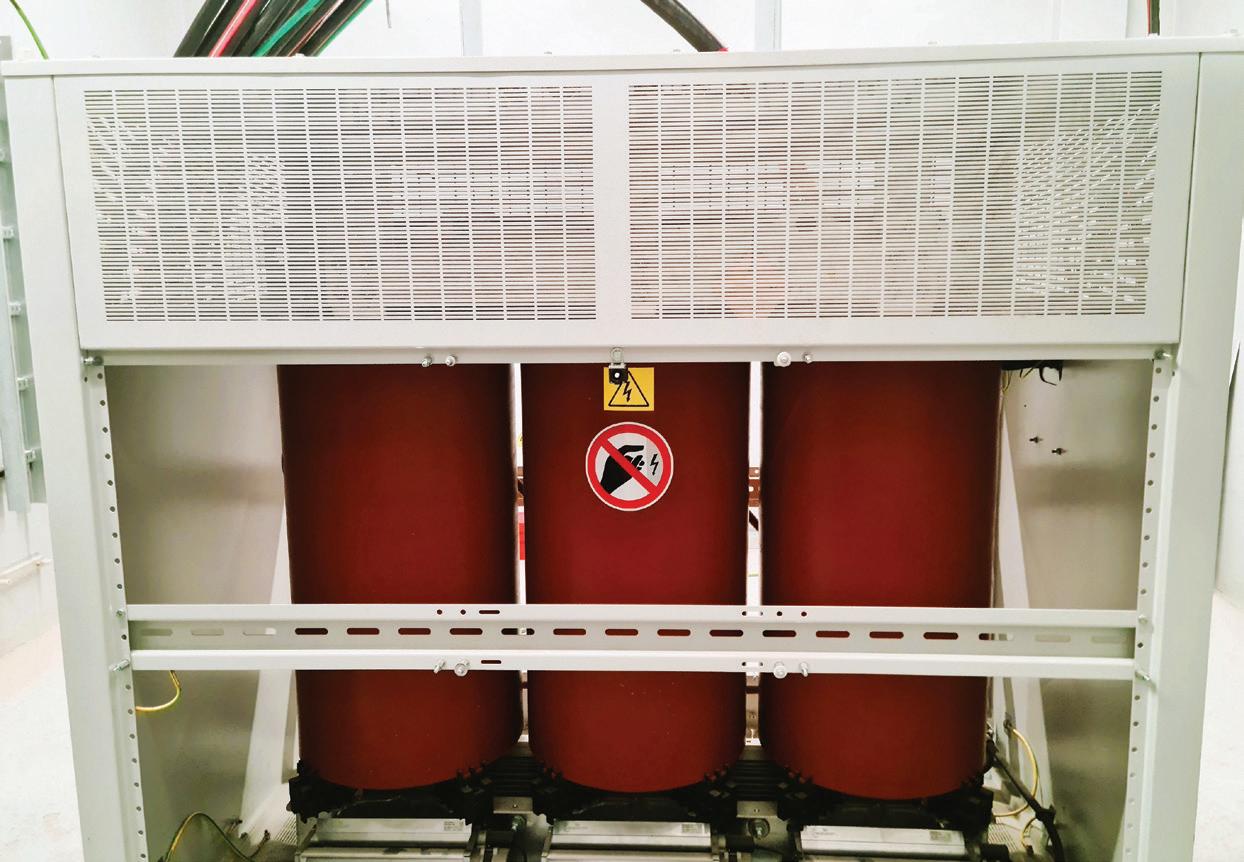
GROWING DEMAND
Claassen says there has been growing demand from food and beverage companies in South Africa. Among Trafo Power Solutions' recent customers are two of the world’s largest brewers,
who have sought to reduce the risk of oil leaks or environmental contamination by opting for drytype technology.
“We’ve also installed equipment in factories where food is processed and where soft drinks are made, where the hygiene concerns are all similar,” he says. “Dry-type transformers are also Class F1rated, signifying the highest level of safety in relation to fire risk.”
CUSTOMISED TRANSFORMATION
He notes that Trafo Power Solutions not only supplies the transformers, but is also responsible for control and protection systems – to protect against risks such as over-temperature and voltage surge. The transformer and related equipment are designed to suit each specific application. In a recent project for a leading brewer,

Trafo Power Solutions also supplied the low- and medium-voltage switchgear, which included low-voltage distribution boards, fully type-tested to IEC61439, as well as IEC61641 (Internal Arc Fault) customised ring main units, along with transformers.
“This demands extensive consultation with all other stakeholders in these projects,” Claassen points out. “We engage with the client and consulting engineers, as well as architects and contractors if the project involves any new build aspects.”
SOUTH AFRICAN BUILDER JUNE 2023 40 PRODUCTS
(Above, from left): This 2 000kVA dry-type transformer supplied by Trafo Power Solutions to the food and beverage sector is designed to provide a compact, robust solution and can fit into any space with ease, while delivering the power needed and Trafo Power Solutions specialises in dry-type transformers fitted in enclosures designed for the food and beverage sector.
VALUABLE LIFESPANS AND OPERABILITY






































Similar work has been conducted in various parts of Africa, where the company has demonstrated its ability to achieve the highest standards of quality in its projects. The capable project execution team, combined with considerable flexibility from the manufacturing facility, means that design changes can be readily accommodated.













“Our priority is that, at the end of a project, the customer will have a solution that fits their operational environment and meets their exact requirements,” he says. “This also ensures optimal performance of the electrical equipment, supporting a long lifespan while ensuring minimal maintenance.”
He emphasises that after-sales support is focused on getting any issues resolved without delay, drawing on the expertise of Trafo Power Solutions’ engineers and technicians.



JUNE 2023 SOUTH AFRICAN BUILDER
(Above): Dry-type transformers do not pose any risk of oil leaks or spills, making them ideal for use in the food and beverage industry, where cleanliness and hygiene are crucial.
“TRAFO POWER SOLUTIONS NOT ONLY SUPPLIES THE TRANSFORMERS, BUT IS ALSO RESPONSIBLE FOR CONTROL AND PROTECTION SYSTEMS – TO PROTECT AGAINST RISKS SUCH AS OVER-TEMPERATURE AND VOLTAGE SURGE.”
PREVIOUS SA BUILDER MAGAZINE ISSUES ARE AVAILABLE ONLINE FOR ALL 28 SCAFFOLDING 32 SKY-LEVEL 35 APRIL 2023 No 1169 STATE OF OUR NATION 33 REUSE VS RENOVATE 30 THE SOLAR SOLUTION 44 MARCH 2023 No 1168 Visit issuu.com/isikhovapublishing to view back issues DID KNOW? YOU
(Above): A 1 250kVA dry-type transformer within an IP23-rated enclosure used in the hospitality industry.
BROADENING FINANCIAL OPTIONS FOR CONTRACTORS
A business agreement signed by Atlas Copco Power Technique and Integrated Pump Rentals (IPR) serves to improve and expand product offerings, provide green solutions and open up new markets, subsequently promoting excellent business growth for both partners across Africa.
In terms of the agreement, Power Technique will offer a complete diesel and submersible pump range which will be added to the IPR rental fleet. IPR will be master pump dealer for Power Technique in South and Sub-Saharan Africa, as well as in territories further north.

Atlas Copco has been successfully supplying Southern African industry with a wide range of superior-quality, high-performance and reliable submersible and surface dewatering pumps for many years. IPR is a market leader in the pump rental space, backed by a specialist team who offer a full dewatering pump rental service across all industries on the subcontinent.
According to David Stanford, Atlas Copco Power Technique’s business line manager: portable products, the timing of this partnership could not have been better. “Both parties were keen to join forces. IPR was looking for a new brand to go forward, so we are able to add value by bringing our brand to the table, while IPR adds value
SOUTH AFRICAN BUILDER JUNE 2023 42 PRODUCTS
by making our pumps available as a rental option. The synergies and mutual advantages shared by this new partnership simply made this a no-brainer win-win for both Atlas Copco and IPR.”
PRODUCT AND SERVICE PACKAGED OPTIONS
Expanding on the advantages of this partnership, Sarel Bekker, business development manager at Power Technique, says: “Rental customers rightly demand good service and quality products and this agreement with our new business partner enables us to deliver both. Our customers now have the option to rent or to purchase. Moreover, having a rental fleet will help promote our sales, as the product can prove itself to the customer during the rental period.”
In addition to providing Power Technique with access to a large existing customer base in the short term, Bekker believes its
association with IPR will also secure more long-term contracts and projects over the medium term. “We look forward to gaining a larger footprint for our range of pumps across the continent, which aligns with our
business goal of becoming one of the largest pump players in the industry, providing customers with complete, integrated dewatering solutions,” he explains.
CAPACITY TO MINIMISE DOWNTIME
Both Atlas Copco and IPR warehouses based in Jet Park, Johannesburg, will hold sufficient stock to ensure a continuous supply to customers. The IPR facility also houses a complete workshop where all rental pump service and repair requirements will be carried out by skilled technicians.

The Atlas Copco team shared theory and practical training on their submersible and surface pumps during a highly productive four-day training session at IPR’s premises during February. Bekker reports that the training was extremely successful and well-received and that they also conducted a few customer visits.

JUNE 2023 SOUTH AFRICAN BUILDER 43 PRODUCTS
“THE SYNERGIES AND MUTUAL ADVANTAGES SHARED BY THIS NEW PARTNERSHIP SIMPLY MADE THIS A NO-BRAINER WIN-WIN FOR BOTH ATLAS COPCO AND IPR.”
AFRICA’S PROPERTY SECTOR DRIVES INNOVATION FOR DIGITAL SOLUTION
Digital transformation, sustainability and innovation are some of the key considerations with which Africa’s commercial property players are grappling in today’s fast-evolving industry.

Speaking at the recent East Africa Property Investment Summit, MD of Broll Uganda Moses D Lutalo stressed the need for integrated digital solutions that encompassed property management, integrated

SOUTH AFRICAN BUILDER JUNE 2023 44 GLOBAL VIEW
(Above): Moses D Lutalo, MD of Broll Uganda, who spoke at the East Africa Property Investment Summit.
facility management, financial management, and mobility and business intelligence.
The summit, which was held in Nairobi, Kenya, brought together investors, developers and property leaders from more than 25 African and global countries to network, share information and conduct business in the East African region.
ALL-ENCOMPASSING SOLUTION KEY TO POTENCY OF PROPERTY’S FUTURE
“Digital transformation has become key for the real estate industry globally and in Africa, with an increase in the number of processes and transactions that take place online. This was accelerated by the Covid-19 pandemic, but has now become a driving force in itself – and there’s no turning back,” said Lutalo.
Off-the-shelf solutions might handle one aspect of property services, such as arrears management, he explained. While this would do the job at hand, a solution which was not integrated with other parts of the financial, property and facility management processes could not be leveraged
to uplift business processes, efficiencies, transparency and quality of data.
MULTI-MODULAR WORKFLOWS AND QUALITY DATA
What was actually needed was a platform which ran on the Internet via a private or public cloud as a software as a service. The native online nature of such a solution would enable a work-from-anywhere and on-any-device workforce. Here, multiple modules would include purpose-built workflows that aligned with international best practices, provided a seamless uplift of existing business
practices and guaranteed data quality and integrity.
Growing concerns around climate change and rising energy costs had also increased the demand for energy-efficient innovations, noted Lutalo.
This was particularly germane in African countries struggling with intermittent power supply, high fuel prices and looming carbon taxes. To future-proof their investments, real estate players could add significant value by investing in energy-efficiency measures such as smart meters and data analysis tools aimed at alleviating some of the financial pressure on tenants.


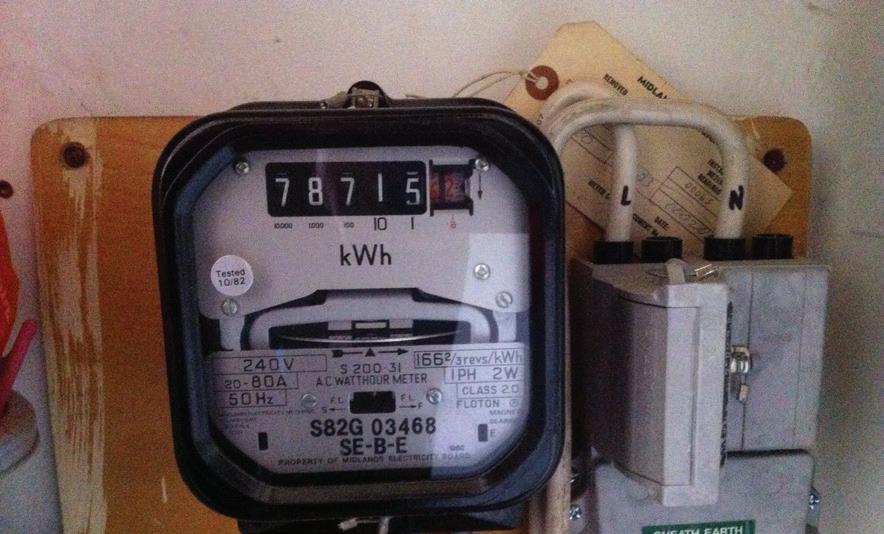
NEW SIGHTS OF AN INTEGRATED DIGITAL FUTURE
Lutalo reiterated that integration was key to every aspect of the retail services sector. “Whether it's lease and property management, asset management, tenant management or getting to grips with debtors and creditors, when these aspects all come together in an integrated way, our industry will be able to achieve new heights of efficiency and digital evolution,” he said.
JUNE 2023 SOUTH AFRICAN BUILDER 45 GLOBAL VIEW
(Above): The shift from analogue meters to smart meters is one of the most significant steps towards automatically digitised data.
(Above): Integrating technologies and crossplatform functionality at the level of commercial property development is a vital step towards African cities yielding optimal value across developmental sectors.
BACKHOE LOADER PARTS TVH – A ONE-STOP SHOP FOR
To serve all our customers in the best way possible, continually expanding our parts range is one of the main goals of TVH. That is why, at the beginning of this year, it welcomed a fourth member to its small earth-moving family: the backhoe loader! TVH expert Joris Tijtgat offers interesting insights into this addition
Tijtgat is the market management specialist for small earth-movers at TVH. By monitoring and analysing the market, he ensures that the company can effectively develop its range for that equipment.

COUNTLESS PARTS FOR SMALL EARTH-MOVERS
In 2020, TVH introduced parts and accessories for three small earth-movers to its range: miniexcavators, skid steer loaders and compact track loaders. “That addition didn’t come out of the blue,” says Tijtgat. “We were already helping many customers and had many fitting parts in stock. However, the official launch did signal the further development of our offer.

“Currently, we take proactive action for parts and accessories suitable for nine focus makes: Bobcat, Case, Caterpillar, JCB, John Deere, Kubota, Takeuchi, Volvo and Yanmar. In addition, we reactively develop parts for other makes, such as Hitachi, Komatsu, Terex and Wacker Neuson. In this way, we’ve already accumulated
over 4 million known references for small earth-movers.”
EXPANSION IS KEY
“Of course, we’re not stopping there. One of our main goals is continually expanding our range, especially for small earth-movers, whether that be with new parts, new makes or new equipment types,” he adds. “With those three options, there’s always one common denominator: their introduction to our range is largely based on the needs of our customers. Naturally, we also keep a close watch on the market and
take action according to all trends and developments within the small earth-moving space, but the most important influences are the needs and expectations of all our customers.”
ENTER THE BACKHOE LOADER
Tijtgat says the company officially added parts and accessories for backhoe loaders to its range at the beginning of this year. “A backhoe loader consists of a tractor-like unit with a bucket at the front and a rear hydraulic excavator arm or backhoe at the back. Each of these components suits a particular job, making the machine extremely versatile,” he explains.
TVH’S OFFER FOR BACKHOE LOADERS
“Actually, TVH has had parts and accessories for backhoe loaders in stock for quite some time. This new range is mainly a continuation of our current offer for small earth-movers. We’d like to make customers aware that we’re now proactively developing parts for backhoe loaders,” he adds.
“We have many parts in stock and are continually expanding our offer, adding new parts every day. Our current range of parts includes electrical components, engine parts, filters, frame and cabin parts, hydraulic components, seats, transmission parts, all kinds of hardware such as bearings and bushings, and much more. If we don’t yet have a particular part, then our extensive look-up service will process a request for it. So no matter what backhoe loader parts and accessories a customer wants, TVH is here to help,” says Tijtgat.
SOUTH AFRICAN BUILDER JUNE 2023 46 SPONSORED FEATURE
“WE HAVE MANY PARTS IN STOCK AND ARE CONTINUALLY EXPANDING OUR OFFER.”
MBA REGIONAL LISTING AND AFFILIATE MEMBERS




Master Builders Association
Boland
Contact: Daniel Uys
E-mail: info@mbaboland.org.za
Tel: 021 863 3330
Master Builders Association
East Cape
Contact: Greg Steele
E-mail: ecmba@global.co.za
Tel: 041 365 1835
Master Builders Association
Free State
Contact: Stephan Claassen
E-mail: admin@mbafs.co.za
Tel: 057 352 6269
Master Builders Association
North Contact: Mohau Mphomela
E-mail: info@mbanorth.co.za
Tel: 011 805 6611
Master Builders Association
KwaZulu-Natal
Contact: Vikashnee Harbhajan
E-mail: info@masterbuilders.co.za
Tel: 031 266 7070
Master Builders Association
Greater Boland
Contact: Duane Phillips
E-mail: info@mbagreaterboland.org.za
Tel: 023 342 6964
Master Builders Association
Northern Cape
Contact: Graham Andrews
E-mail: info@mbanc.org.za
Tel: 053 832 1762
Master Builders Association



Western Cape
Contact: Roekeya Bardien
E-mail: info@mbawc.org.za

Tel: 021 685 2625
Association of Architectural Aluminium Manufacturers of SA

Contact: Johan Heyneke
E-mail: reception@aaamsa.co.za
Tel: 011 805 5002
CAPTAINS OF CONSTRUCTION
Elton Bvumbi, founder and MD of Elton’s Ready Mix Concrete, was born in 1983 and is part of a new generation of construction industry professionals.

He studied mechanical engineering at the University of Cape Town, where he gained an interest in the mining industry. His professional experience was in structural planning and building subterranean structures, through which his knowledge and understanding of specialised concrete was deepened.
By 2016, Bvumbi felt inspired to integrate his professional life with his dream of making a difference in terms of uplifting his fellow countrymen and reducing unemployment and poverty. After two years of creating business plans and additional courses at GIBS, he risked everything and lost a lot on the way, as the journey to creating the success of Elton’s Ready Mix Concrete got underway.
Each successive year has seen the addition of capital equipment and resources, all planned to provide a 360° concrete supply business that brings communities fresh opportunities along the way.
Focusing on the empowerment of women, the brick-making plant, the supply and delivery of aggregate and products, Elton’s Ready Mix Concrete is finding success in business development and community upliftment. To contact Bvumbi, tel: 082 953 4648.
JUNE 2023 SOUTH AFRICAN BUILDER 47
OF CONSTRUCTION
CAPTAINS
The consolidated cement and concrete industry body is soaring to new heights Become a member –be part of the future www.cemcon-sa.org.za





315 0300
• Precast concrete plasticising admixtures

• Ready-mixed concrete plasticising admixtures

• Extended workability polymers

• Set retarding admixtures
• Hardening accelerators

• Viscosity modifying admixtures
• Form release agents
• Synthetic fibres
• Pozzolan-activity mineral additions
• Permeability-reducing admixtures
• Water-repelling admixtures
• Anti-washout admixtures

• Expanding agents
• Drying shrinkage-reducing admixtures
• Clay mitigating admixtures



• Pumping aides
• Air entraining and foaming agents




• Concrete rescue packs
• Evaporation-retarding admixtures

137 5963
AVOID CONCRETE STRENGTH DELAYS.
As winter approaches, the colder ambient temperatures can cause delays in concrete strength development as well as finishing aspects. Rest assured, this challenge can be easily overcome using CHRYSO’s Premia Range of admixtures and demoulding agents.

SOUTH AFRICAN BUILDER JUNE 2023 48
BRAND SUPPORTERS
CEMENT
hanlie.turner@cemcon-sa.org.za 011
& CONCRETE INSTITUTE www.cemcon-sa.org.za
WinteR ACCeleRAtORS Chryso Southern Africa | +27(0)11 395 9700 | www.za.chryso.com | www.gcpat.com
www.za.chryso.com
DMG
www.dmgevents.com yolandamtshawu@dmgevents.com 021
ELECTRICAL CONTRACTOR ASSOCIATION
SOUTH AFRICA (ECASA) www.ecasa.co.za Erika.vanzyl@ecasa.co.za 011
082
Corner North Rand & Trichardt Road, Bartlett AH, Boksburg BOKSBURG Corner Fourways Boulevard & Roos Street Fourways FOURWAYS Corner Blackrock Street Stoneridge Drive, Greenstone Park Ext 2, Edenvale GREENSTONE Corner Hendrik Potgieter & Cascades Road, Little Falls, Roodepoort LITTLE FALLS
online at
leroymerlinsa1 leroymerlin.southafrica leroymerlinsa Make your home the best place to live Thank you Joburg for voting Leroy Merlin as your Best Hardware Store 2022
you
us
best again LEROY MERLIN www.leroymerlin.co.za contact@leroymerlin.co.za 010
CHRYSO
CHRYSO
hannelie@chrysosa.co.za 011 395 9700
EVENTS
OF
392 0000 ELTON'S READY MIX CONCRETE www.eltonreadymix.co.za info@eltonreadymix.co.za
401 8635
shop
www.leroymerlin.co.za
Thank
for making
your
493 8000
TECHNOLOGICAL INNOVATION IN THE CONCRETE INDUSTRY STARTS WITH MAP PRODUCTS. Learn more at mapei.co.za Tel: +27 11 552 8476 Email: info@mapei.co.za MAPEI www.mapei.com j.lewis@mapei.co.za 011
BUILDERS SOUTH AFRICA (MBSA) www.masterbuilders.org.za info@masterbuilders.org.za 011
TECHNICRETE www.technicrete.co.za info@technicrete.co.za 011 674 6900 TVH PARTS SOUTH AFRICA www.tvh.com sales.southafrica@tvh.com 011 281 2700 Save The Date The South African Council for the Project and Construction Management Professions (SACPCMP) will present its Conference & Masterclasses on 13 & 14 November 2023. Registration/Bookings open in June 2023. Venue to be announced soon. Visit www.sacpcmp.org.za for more information on sponsorship opportunities. MASTERCLASSES & Construct ng Bu lt Env ronment Susta nab ity D g t sat on & Inc us on SACPCMP www.sacpcmp.org.za admin@sacpcmp.org.za 011 318 3402 WOMEN IN ENGINEERING www.womenofintelligence.co.za amrita@intelligencetransferc.co.za 011 326 2501
SUPPORTERS
552 8476 MASTER
205 9000
BRAND
CHOOSE YOUR ELECTRICAL CONTRACTOR WISELY
Choosing your electrical contractor based on price can have deadly consequences! All electrical contractors must by law be registered with Department of Employment and Labour and only registered electrical contractors can legally issue Certificates of Compliance.
Using an unregistered electrical contractor is not only illegal, but also downright dangerous and insurers can refuse to pay any claims arising from illegal electrical work.
Registered electrical contractors ensure that all electrical work is performed in accordance with legislative requirements and the applicable codes of practice and technical standards.

Using an electrical contractor who’s a member of the ECA(SA) is a wise choice because while not all electrical contractors are members of the ECA, all ECA members are registered electrical contractors – and their work is covered by the ECA’s Workmanship Guarantee (terms and conditions apply).
National Office (011) 392-0000 | info@ecasa.co.za
Pretoria (012) 342-3242 | infopta@ecasa.co.za
Johannesburg (010) 271-0686 | highveld@ecasa.co.za
Durban (031) 312-6313 | ecakzn@ecasa.co.za
Cape Town (021) 462-2690 | ecact@iafrica.com
Port Elizabeth (041) 363-1990 | adminpe@ecasa.co.za
East London (043) 726-6359 | adminel@ecasa.co.za
Bloemfontein (051) 447-0859 | nita@ecasa.co.za
HELPDESK 087 944 4555
www.ecasa.co.za
ECA ELECTRICAL CONTRACTORS’ ASSOCIATION(SA) HOME OF YOUR TRUSTED ELECTRICAL CONTRACTORS

























































































































































































































































































